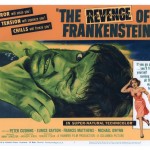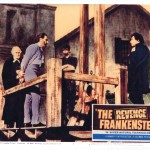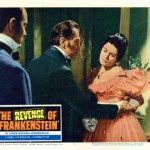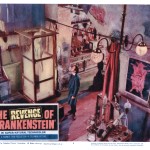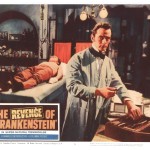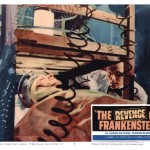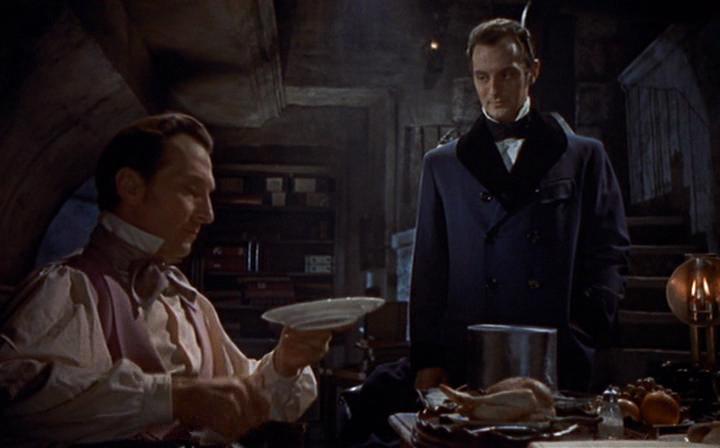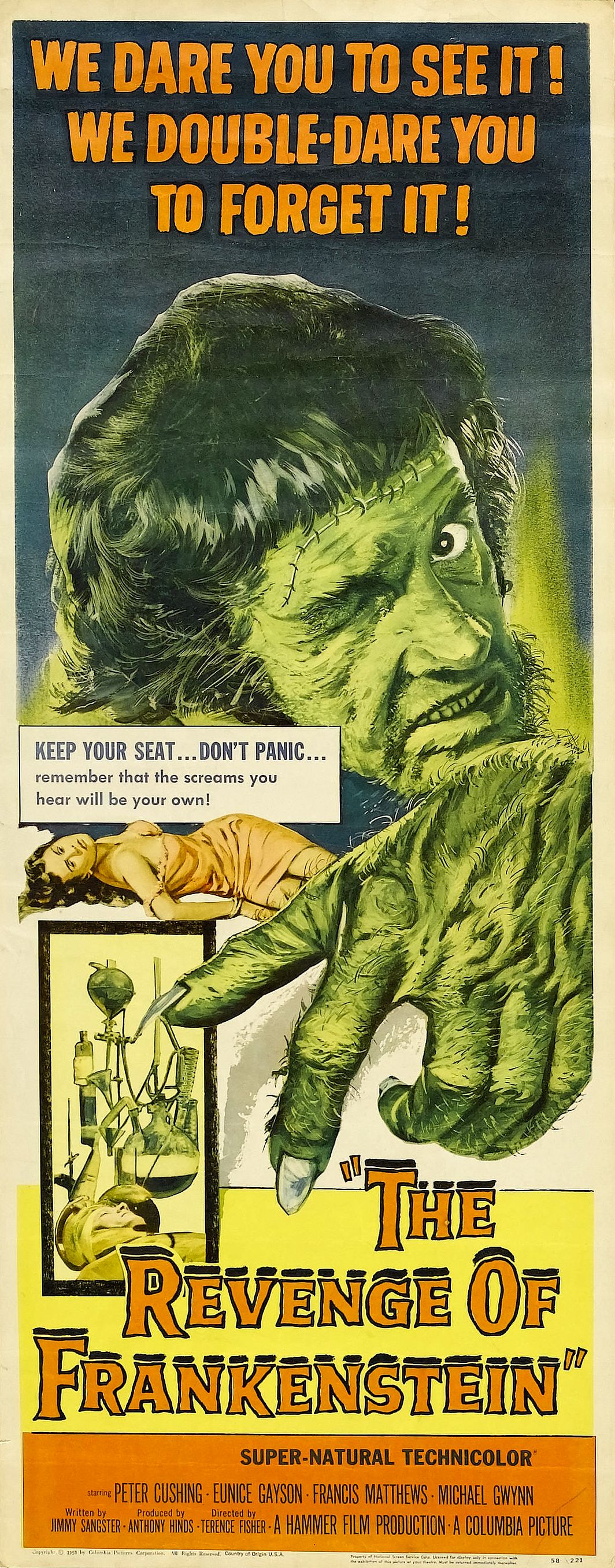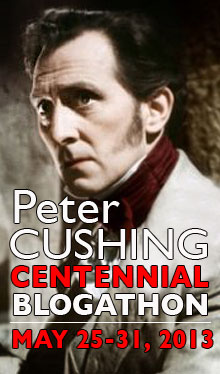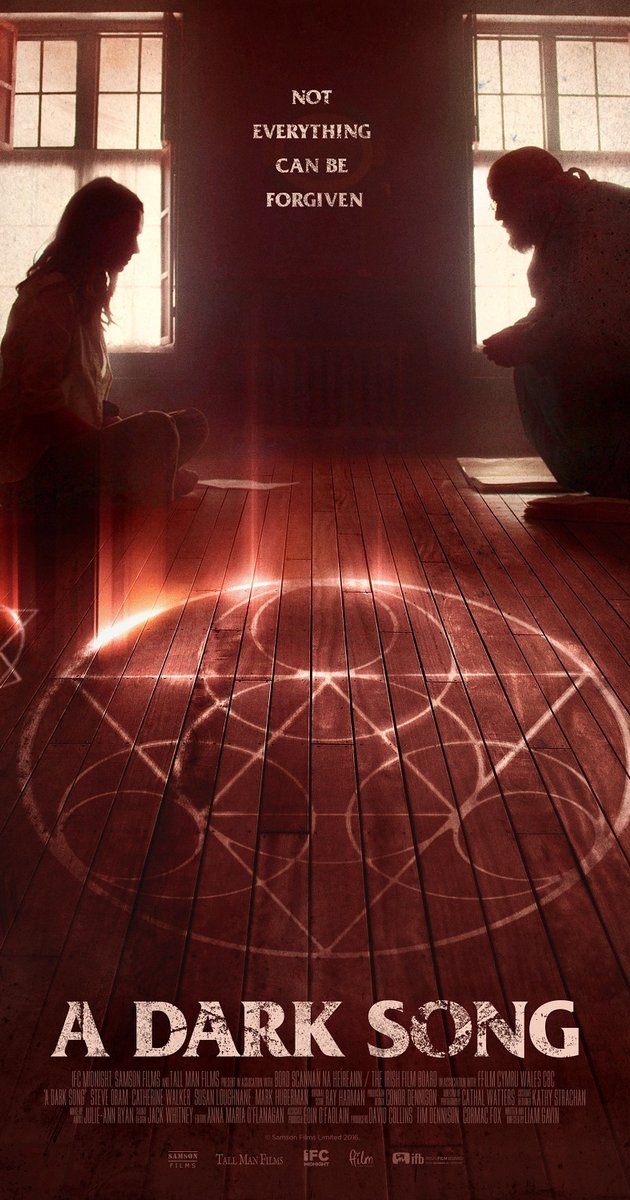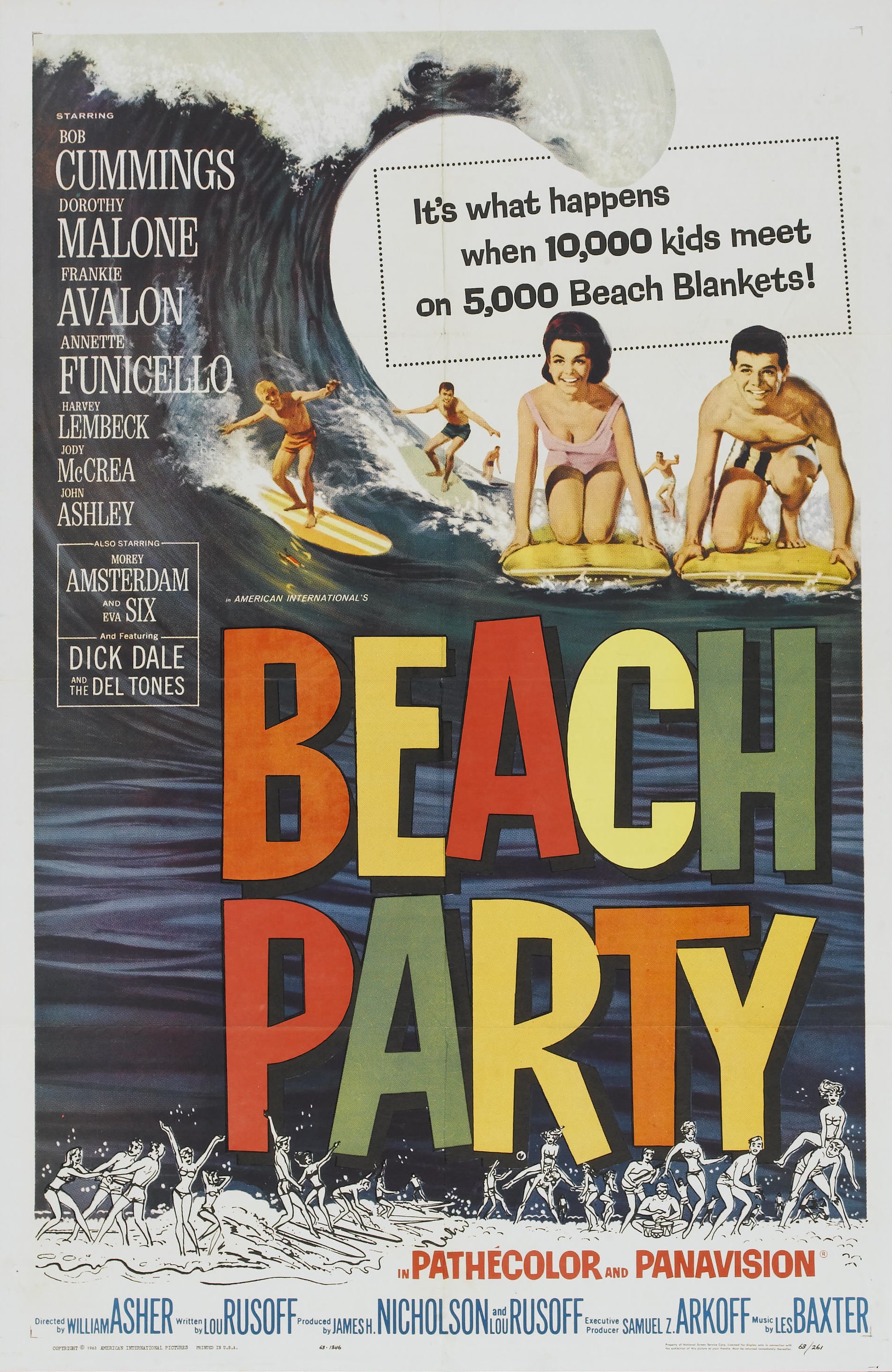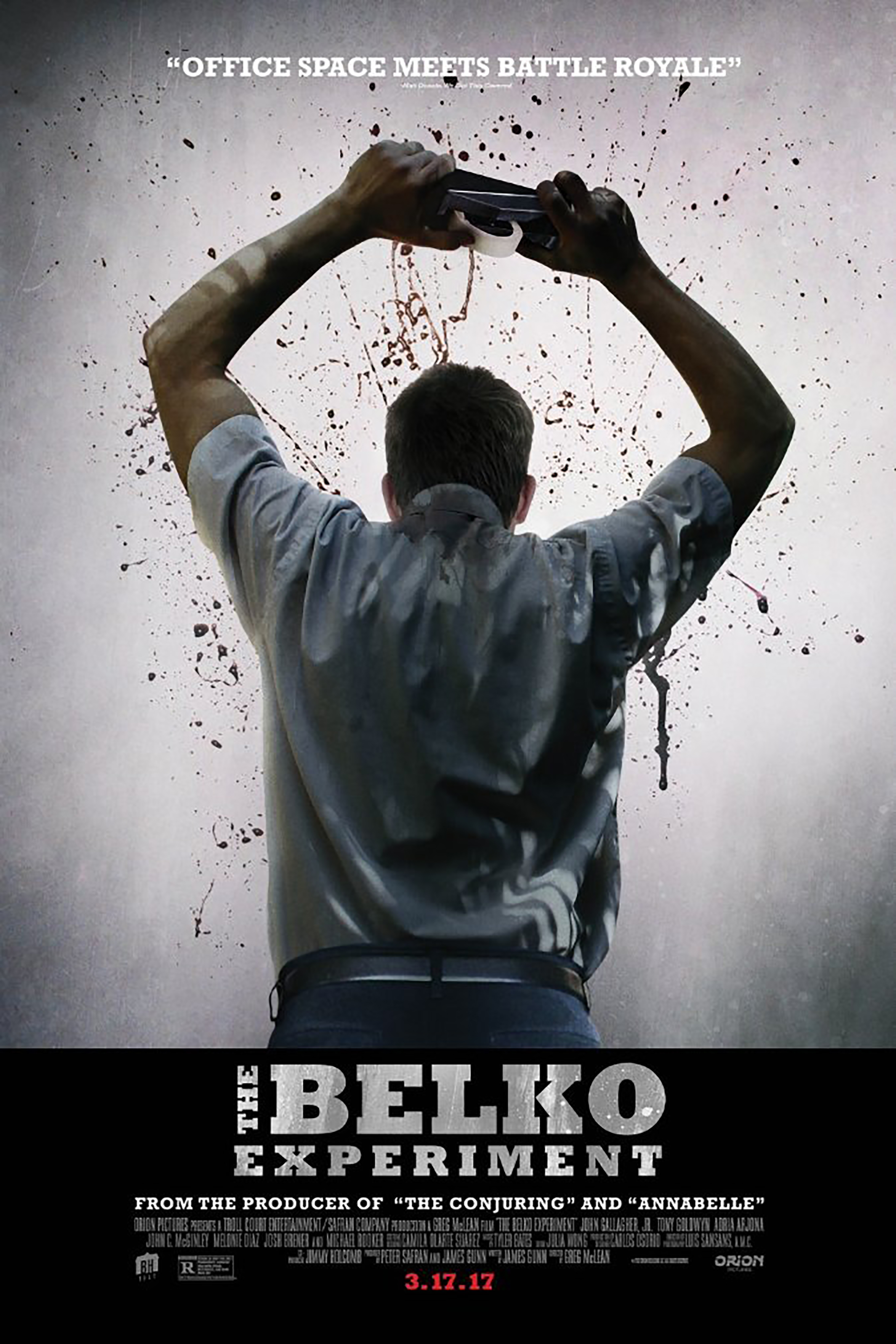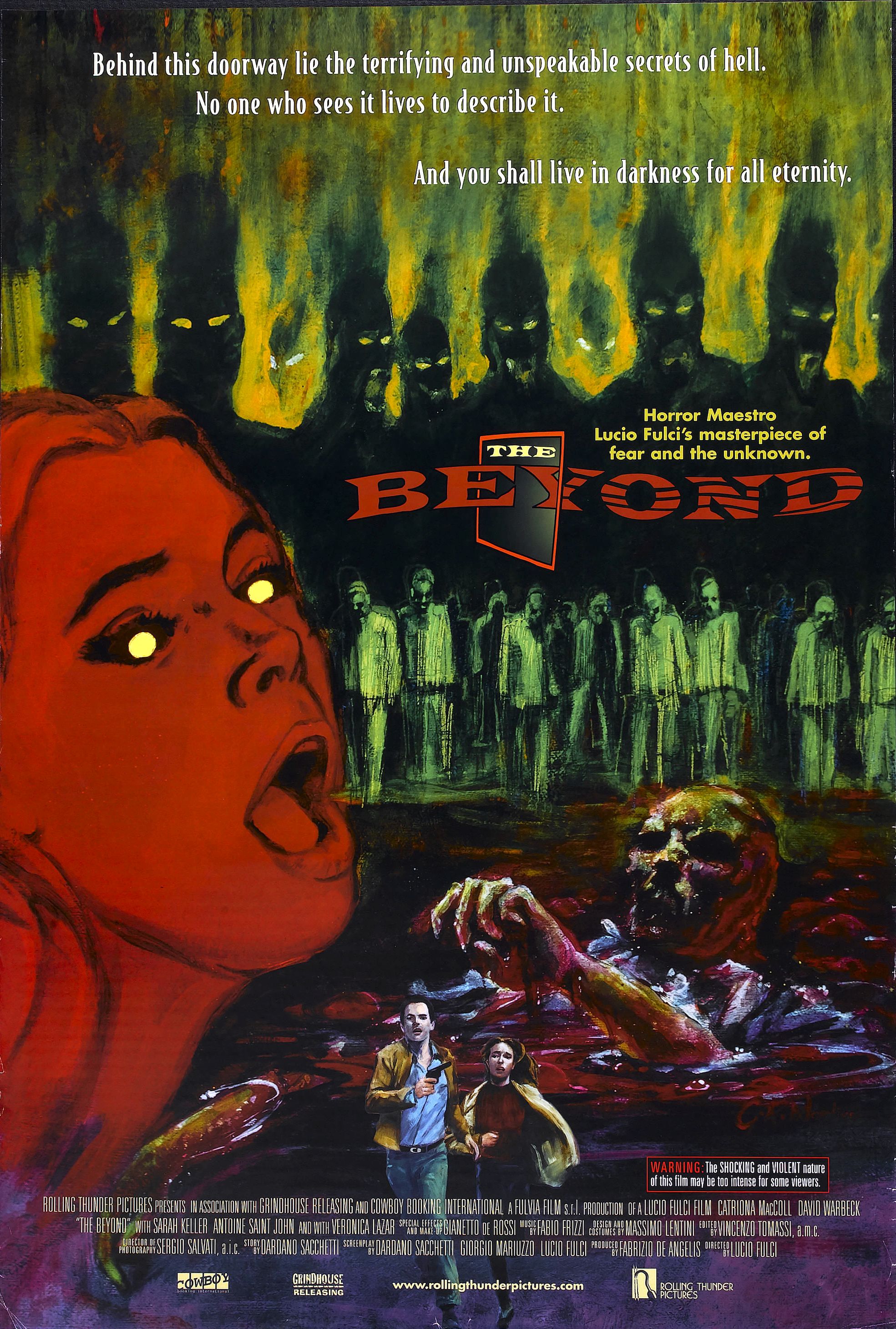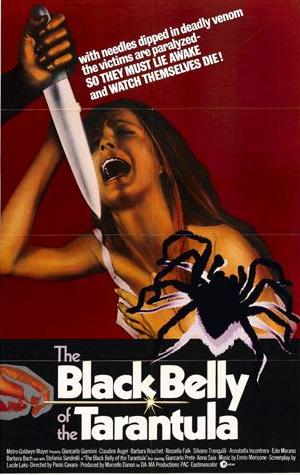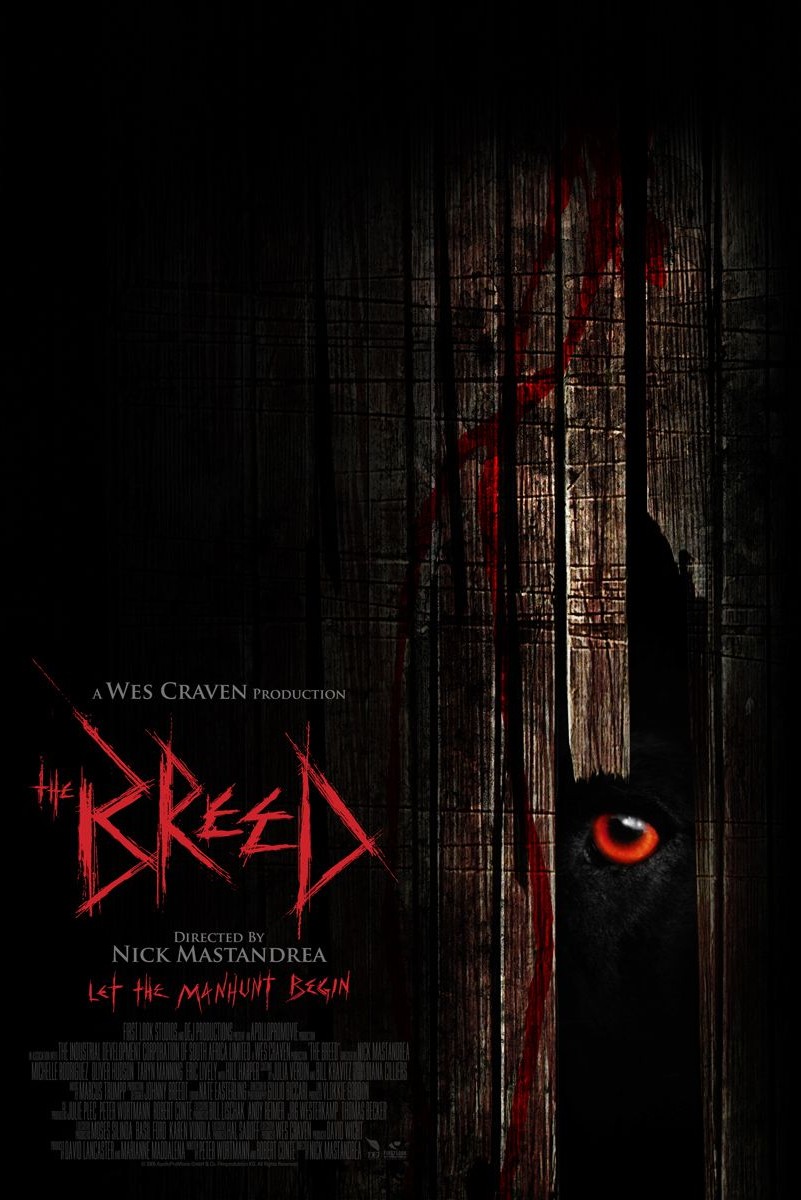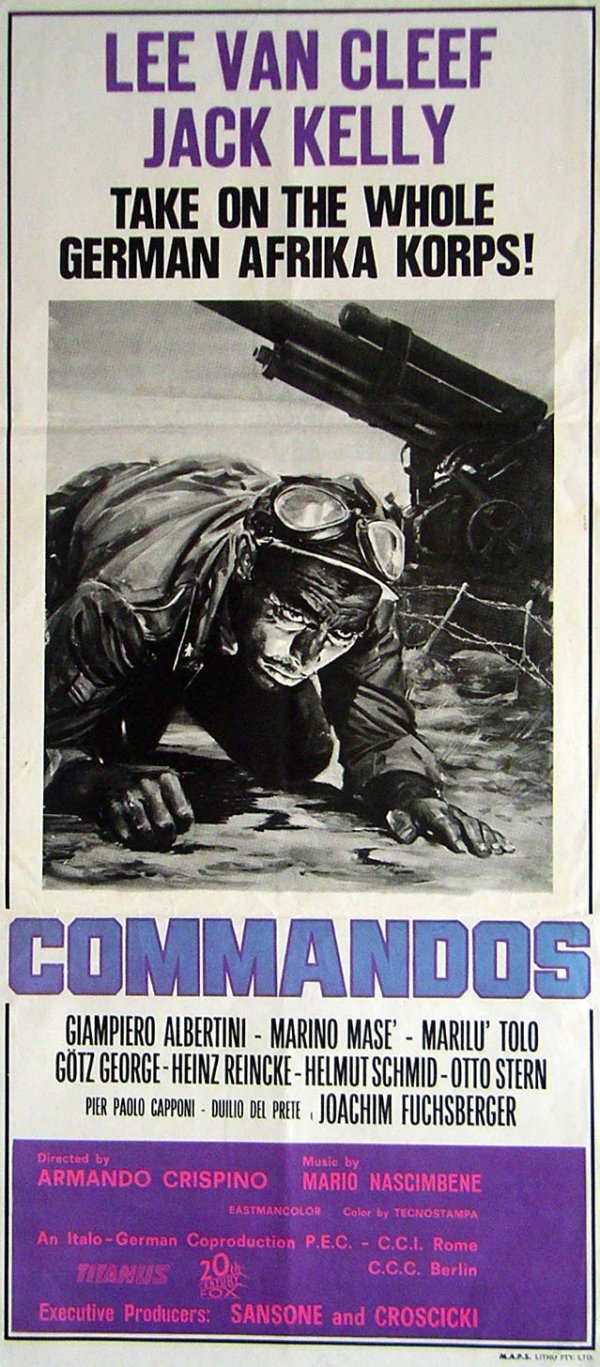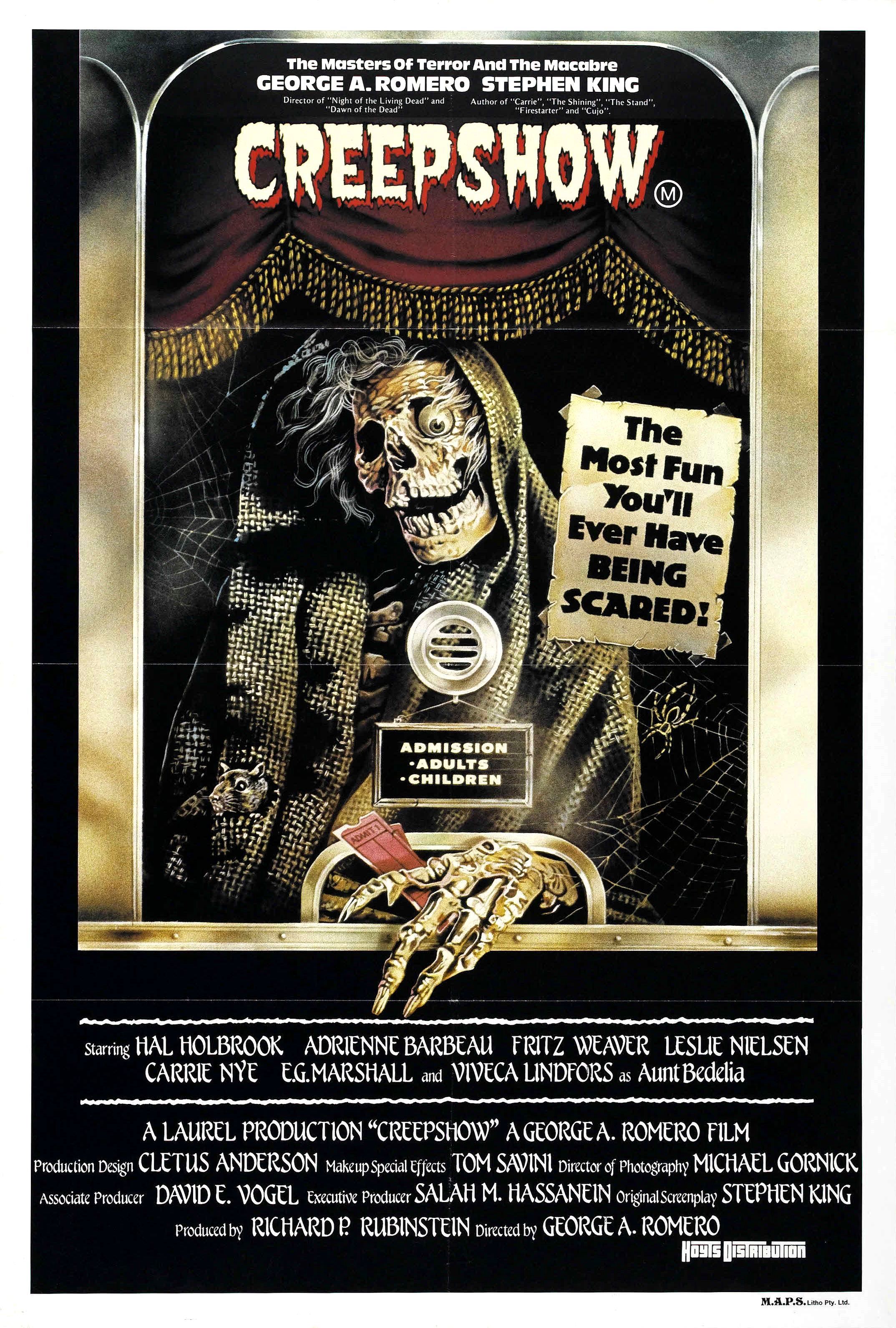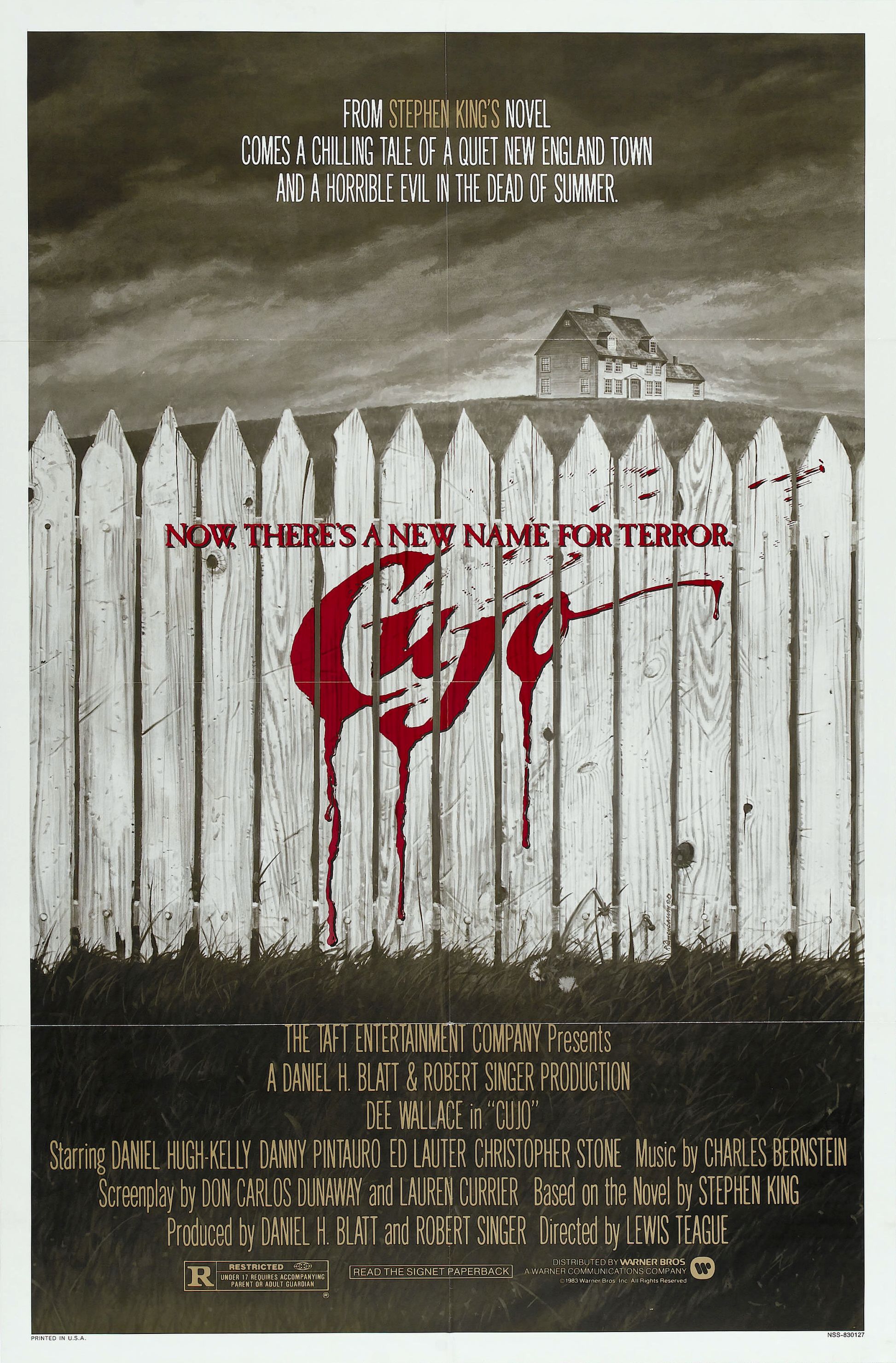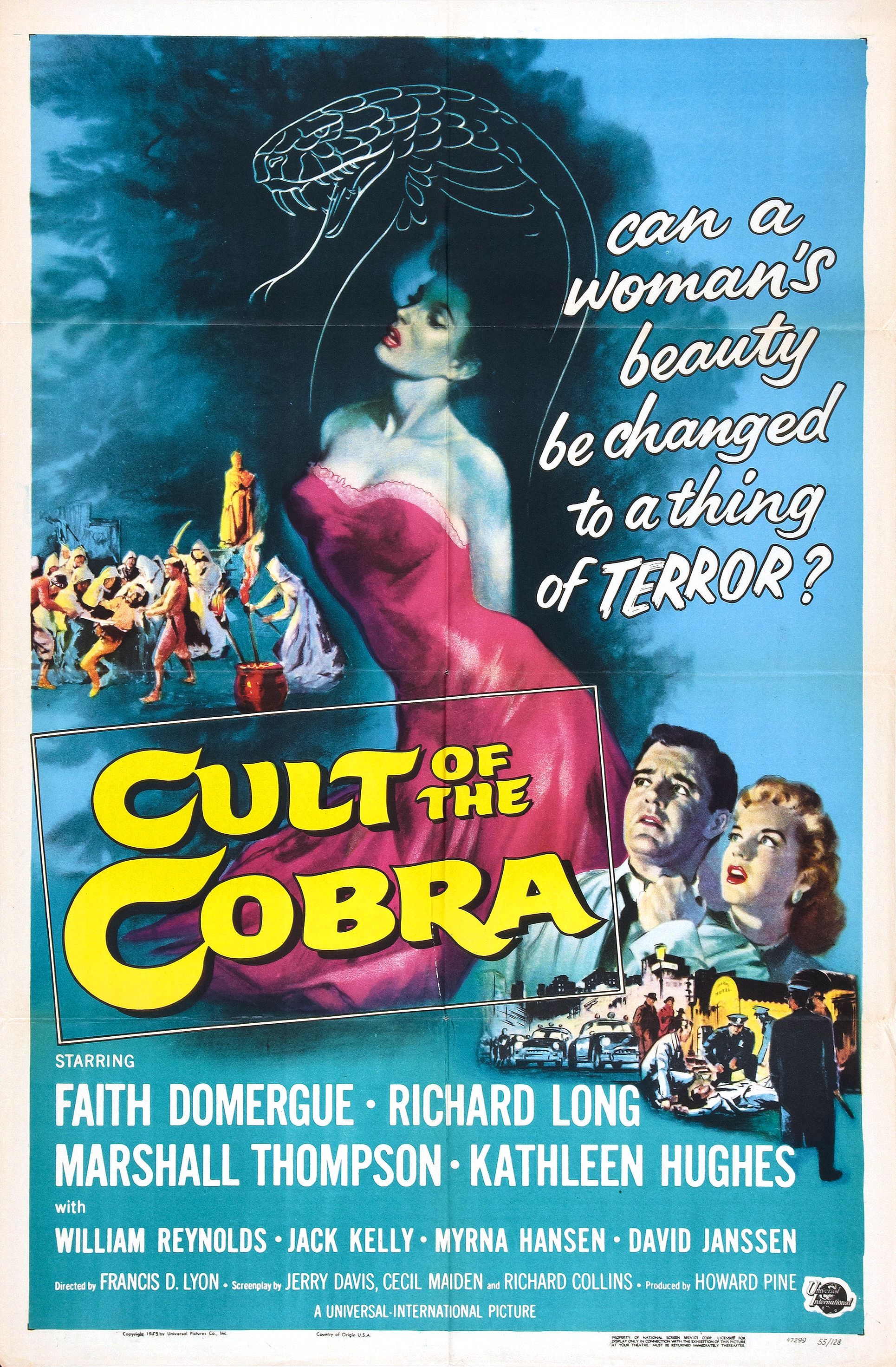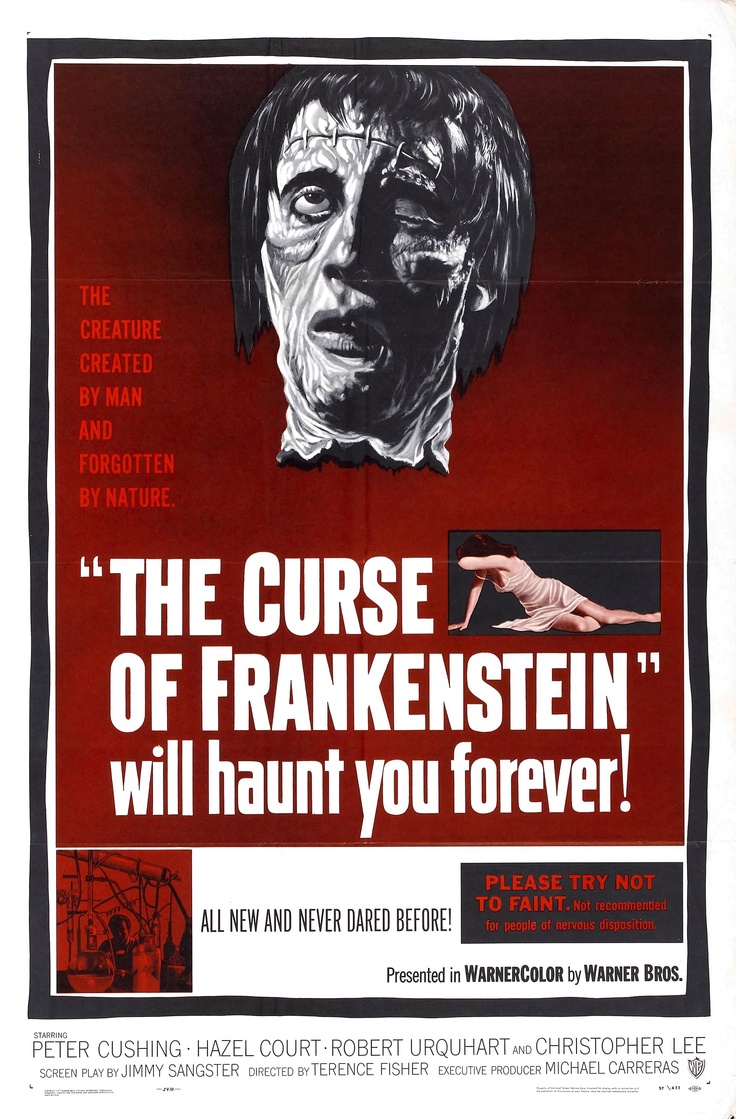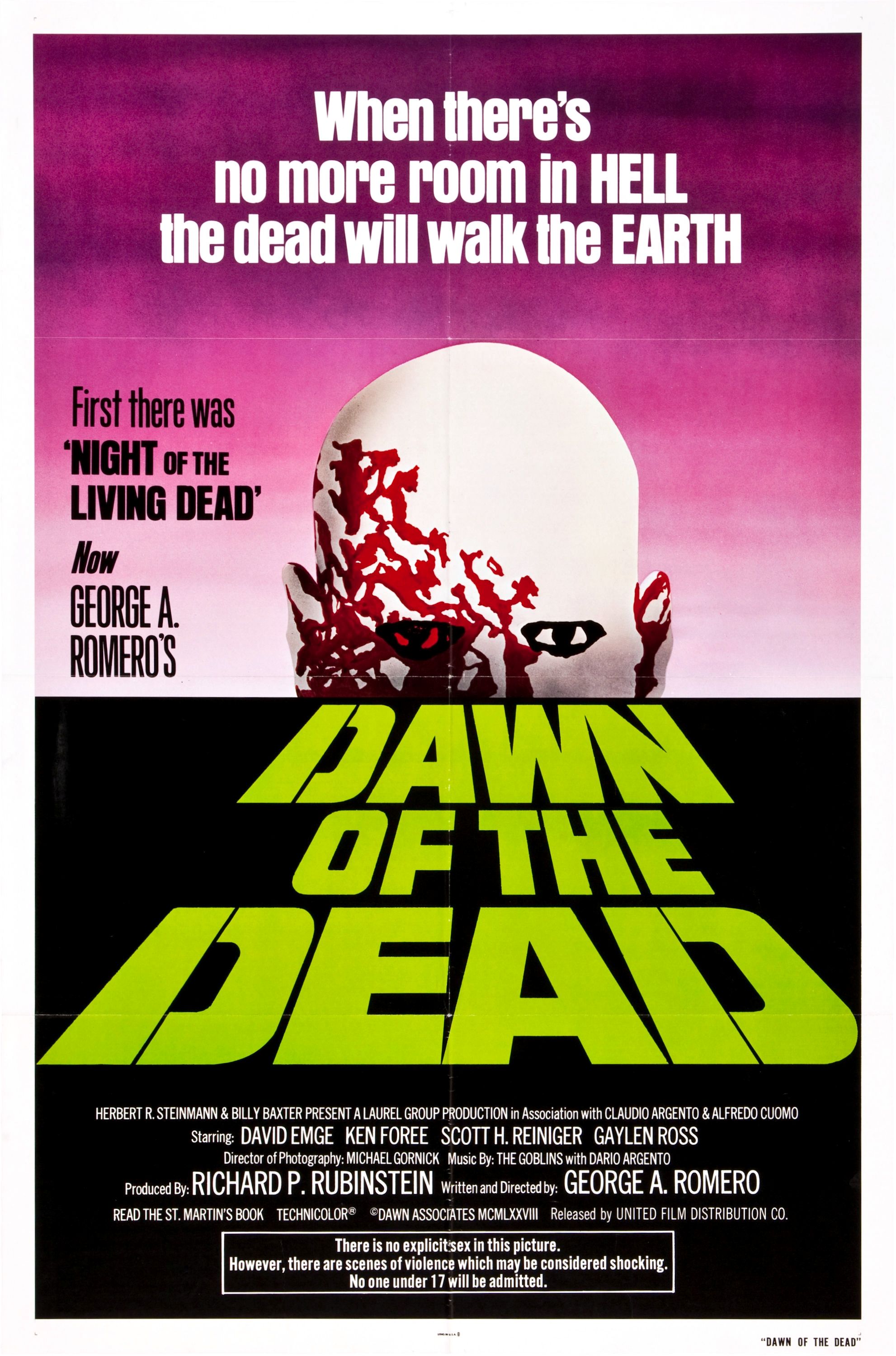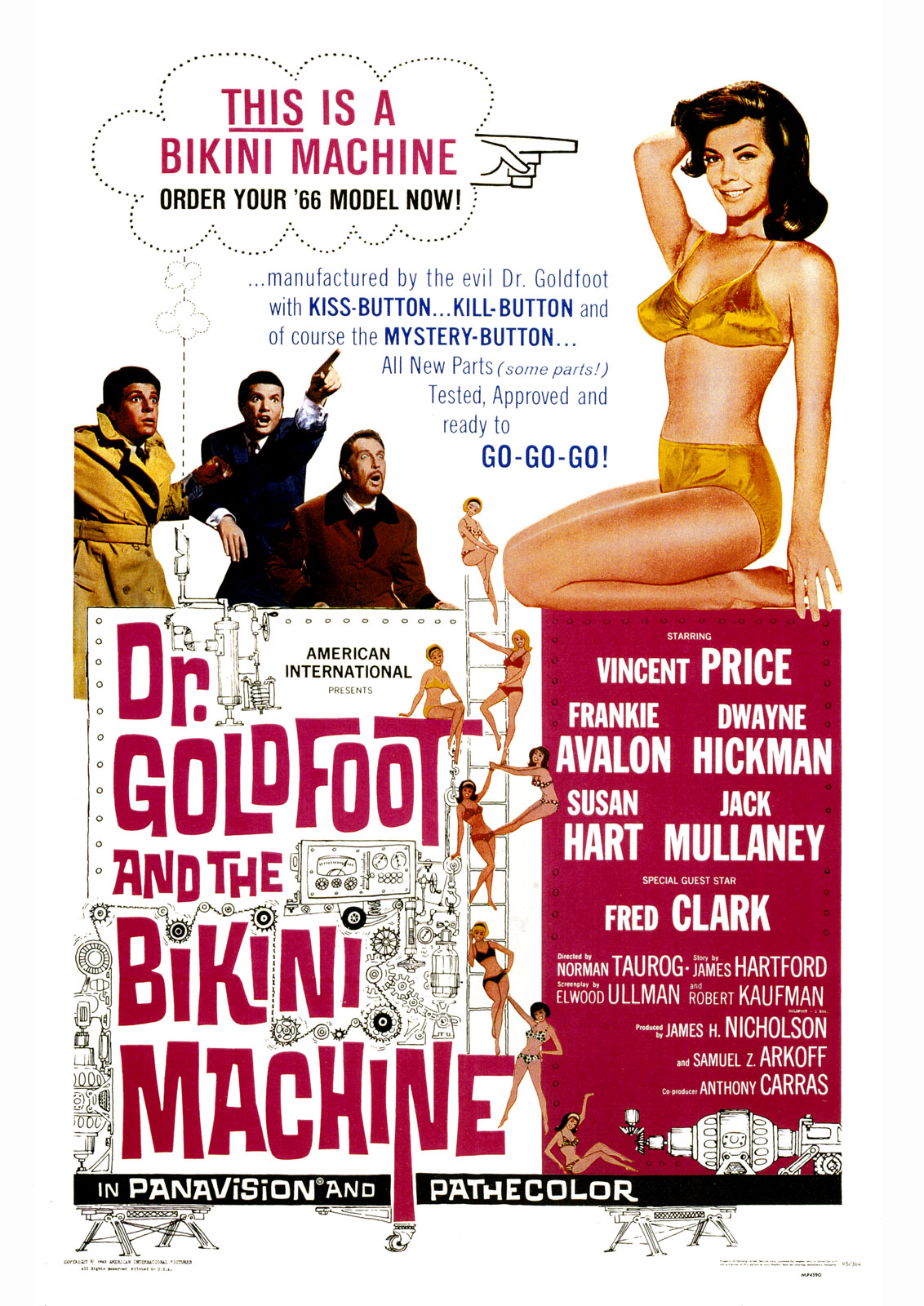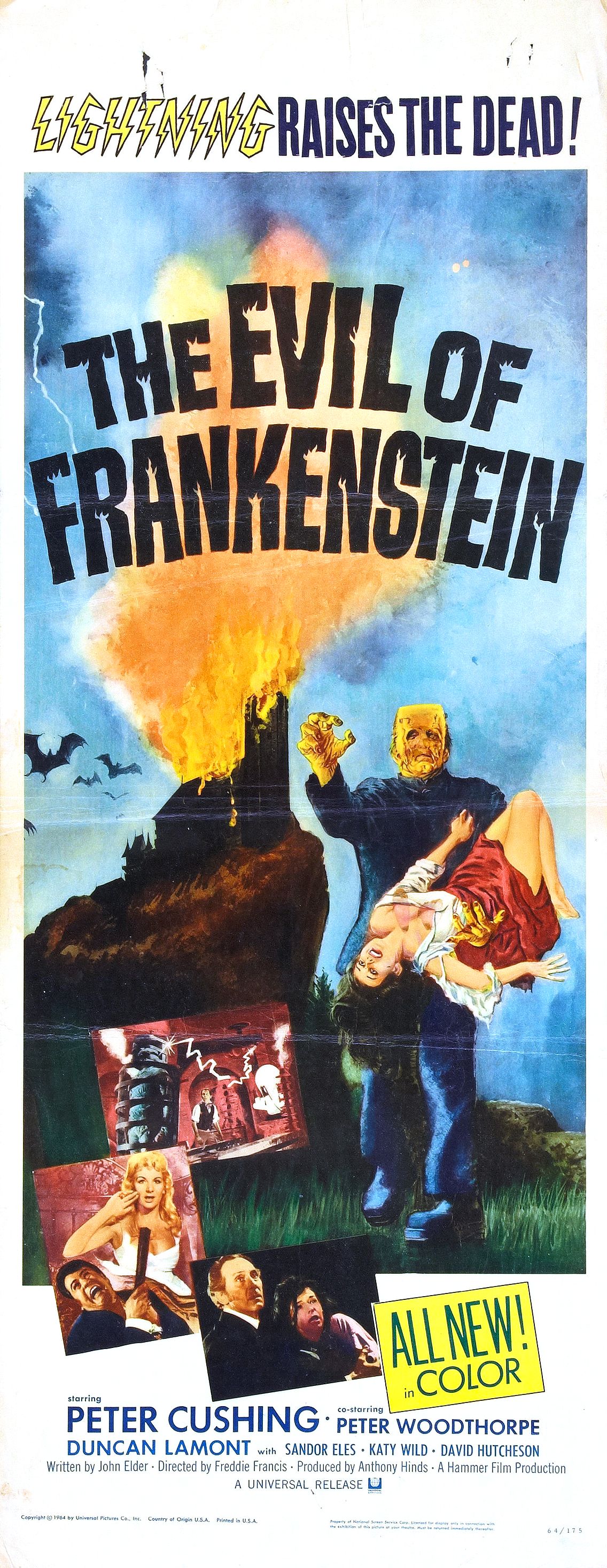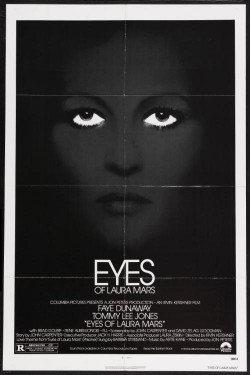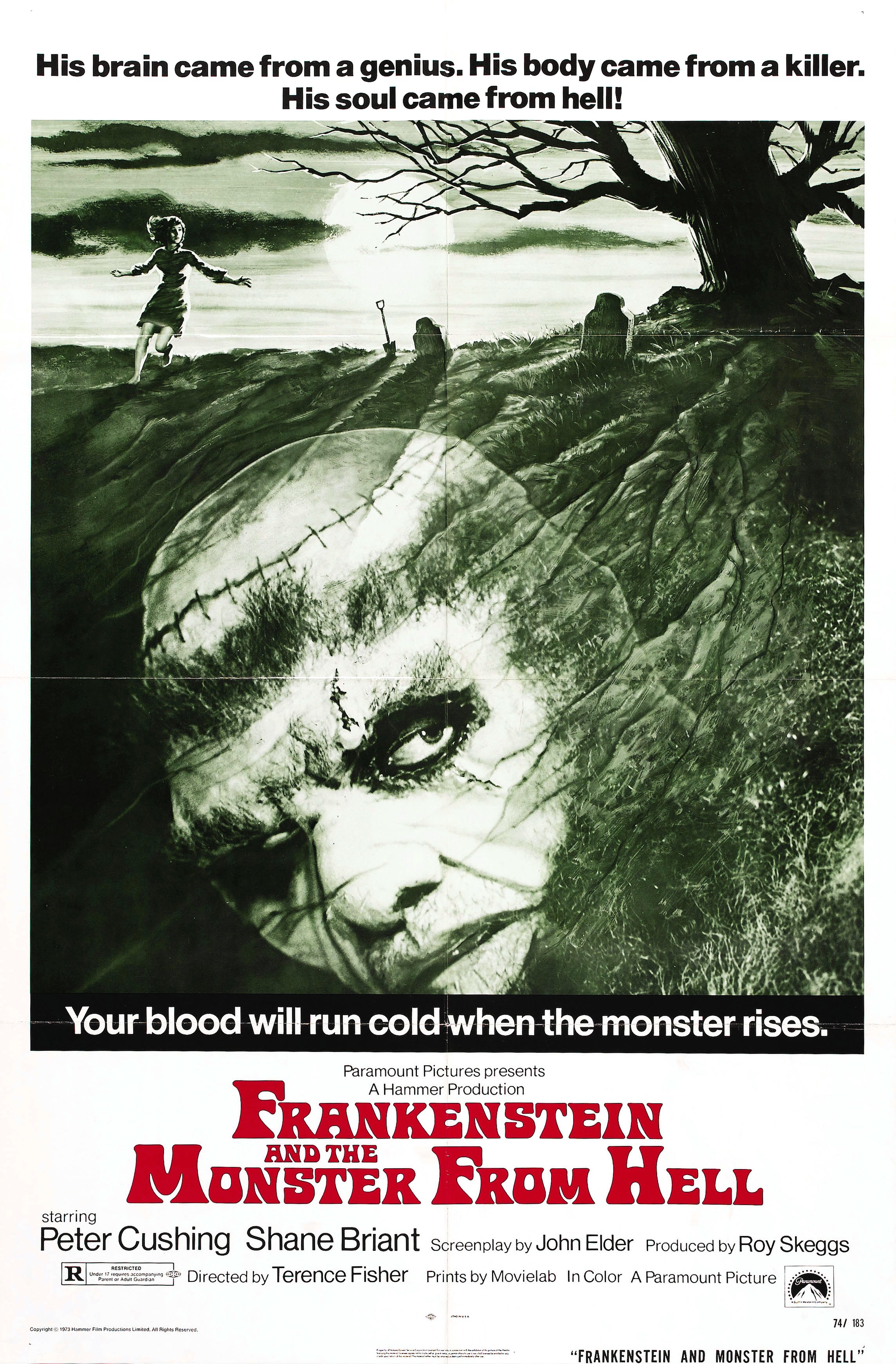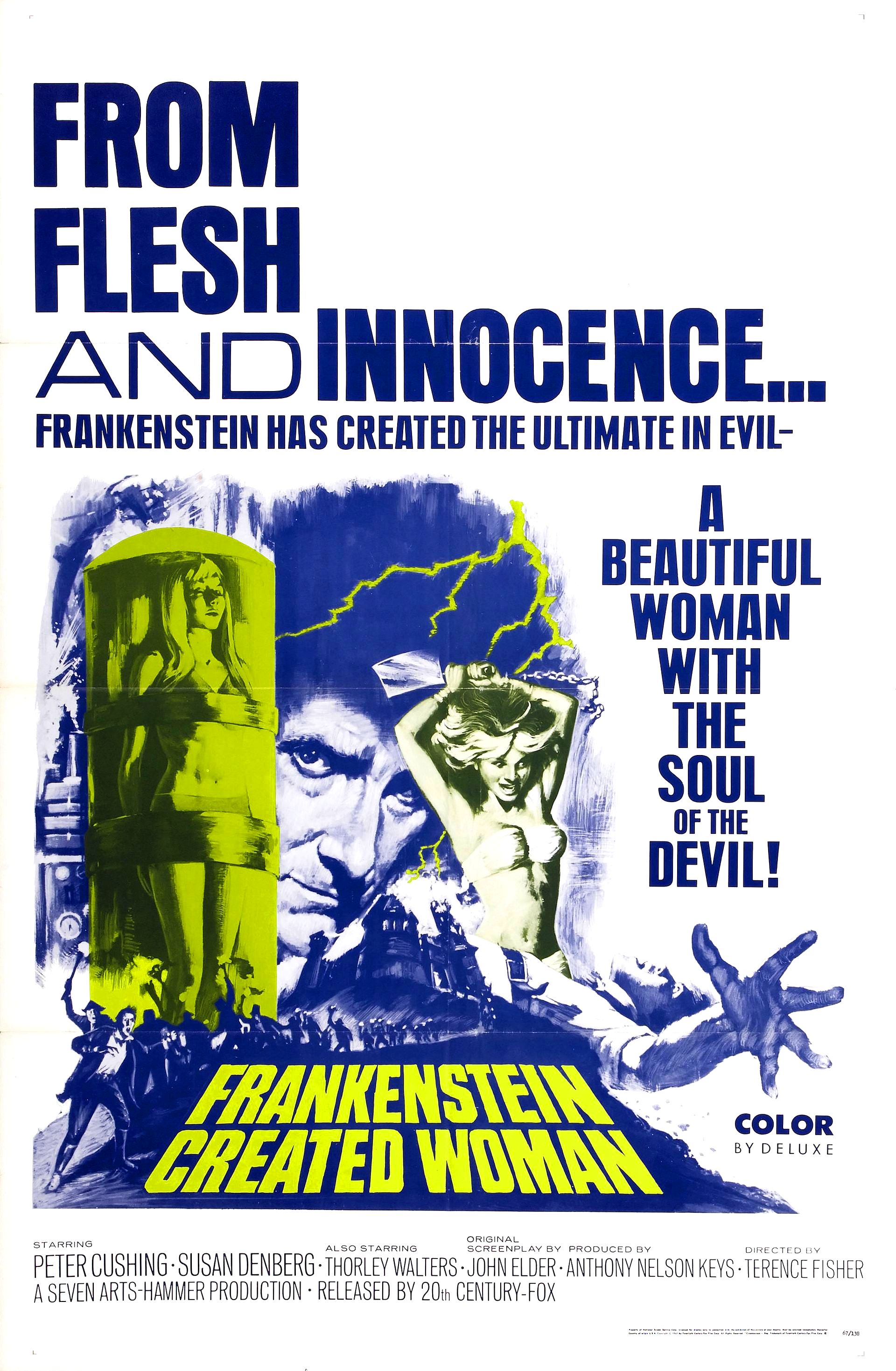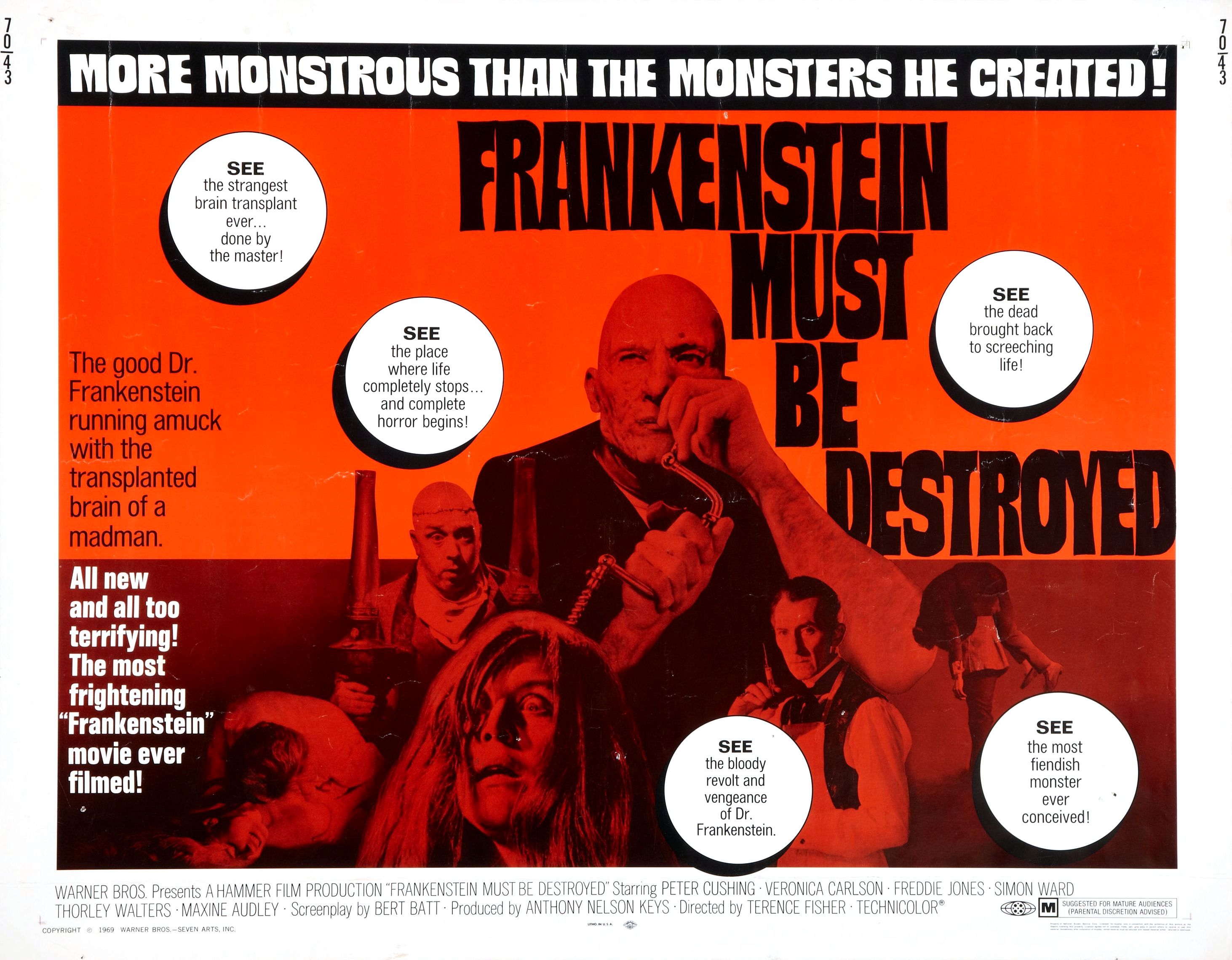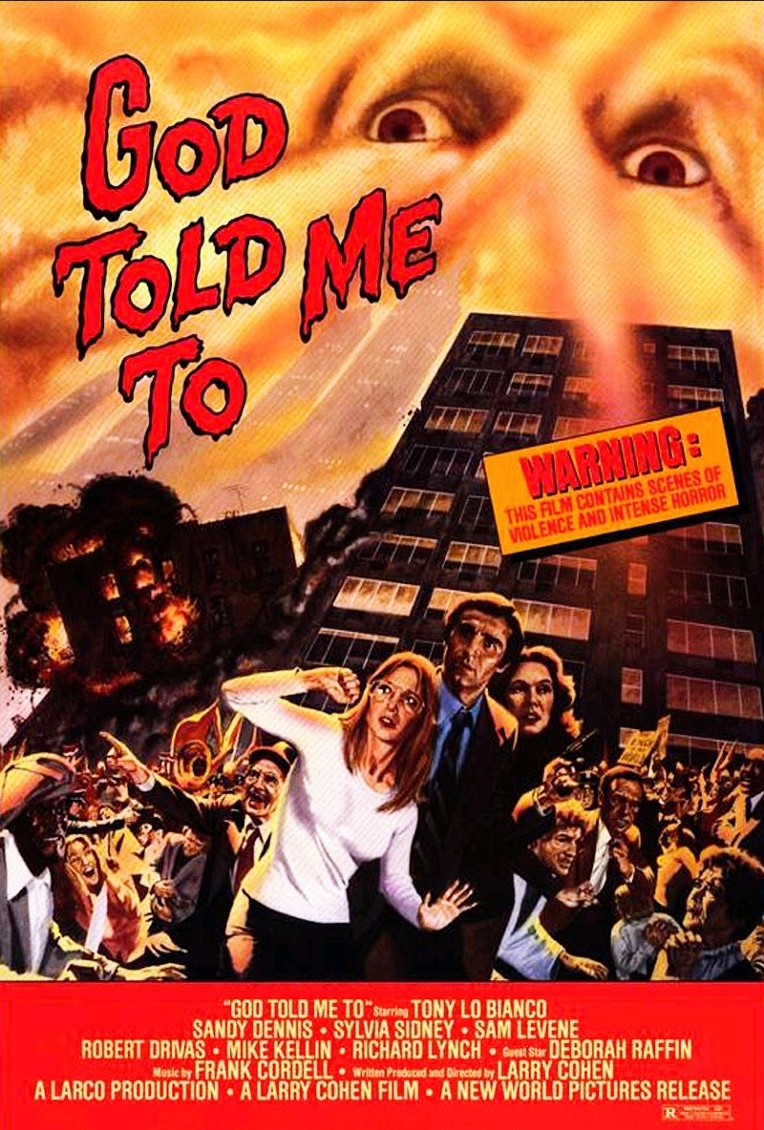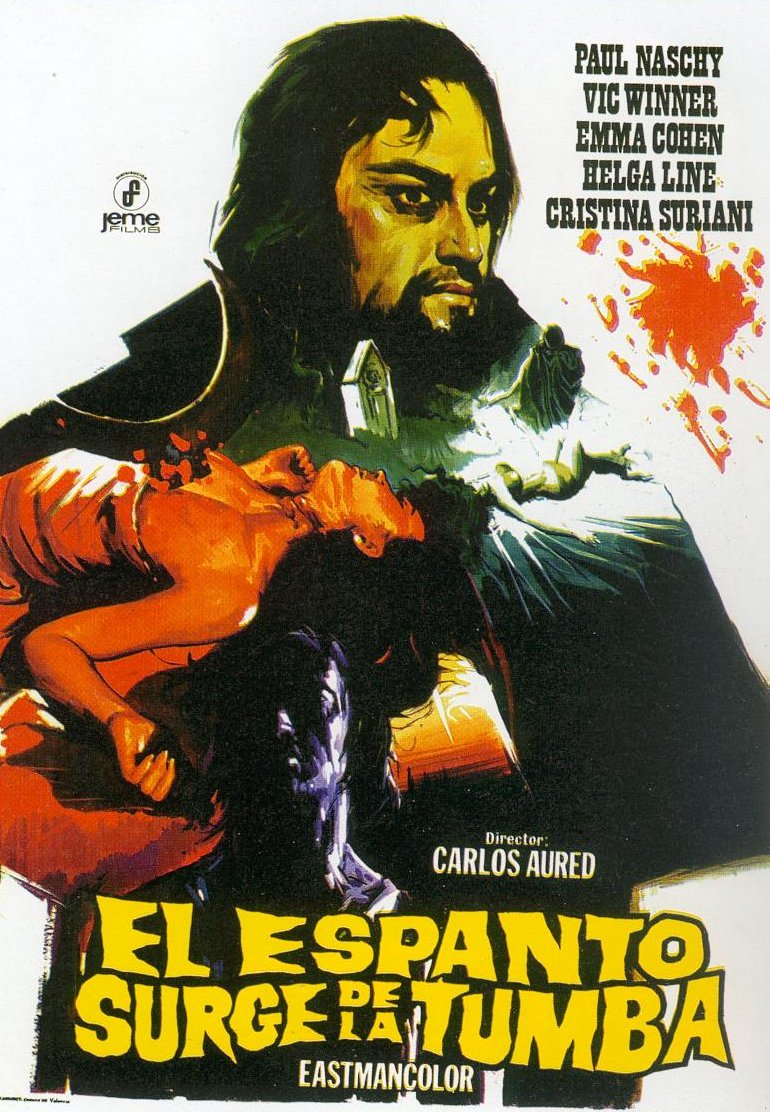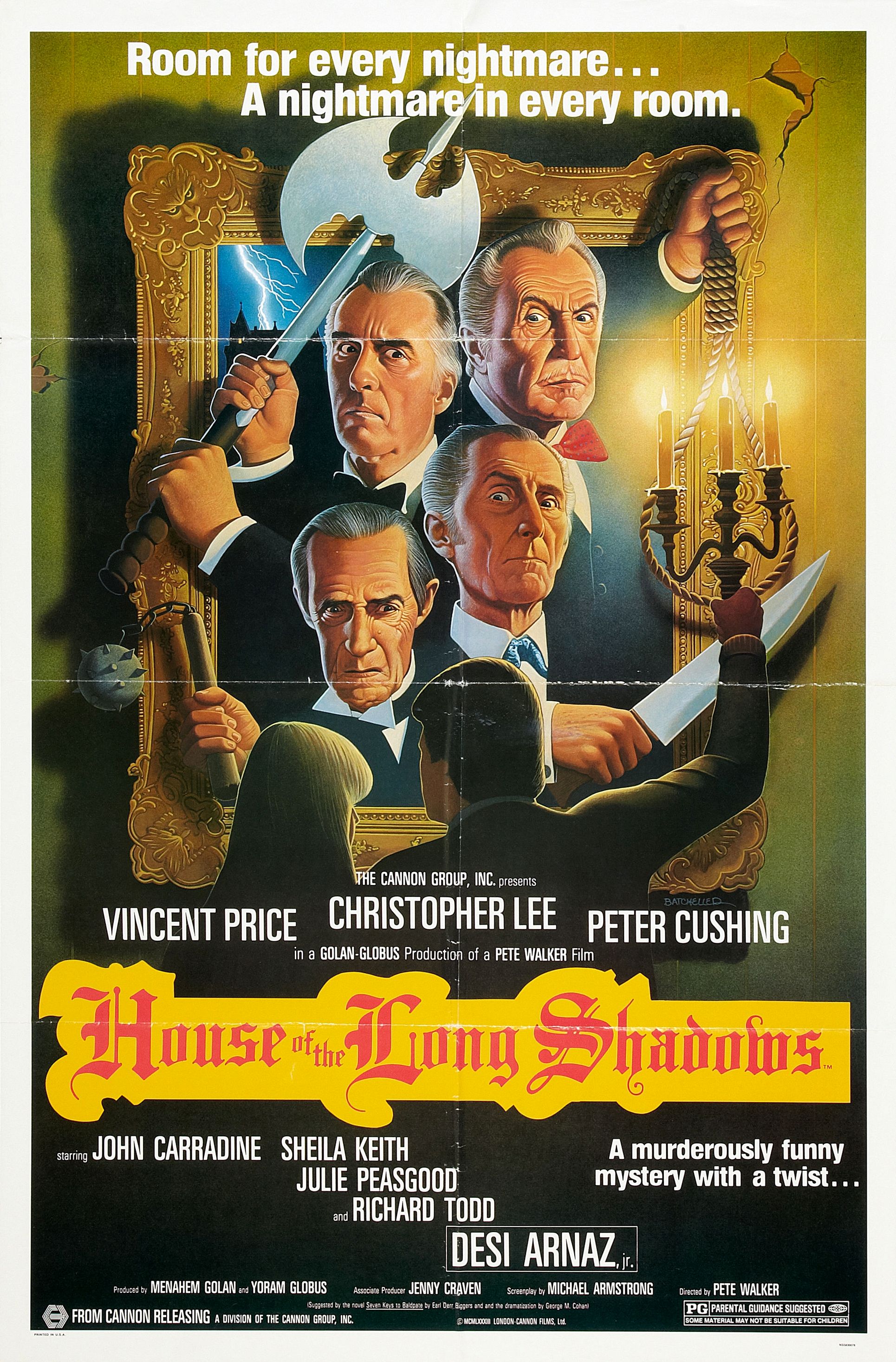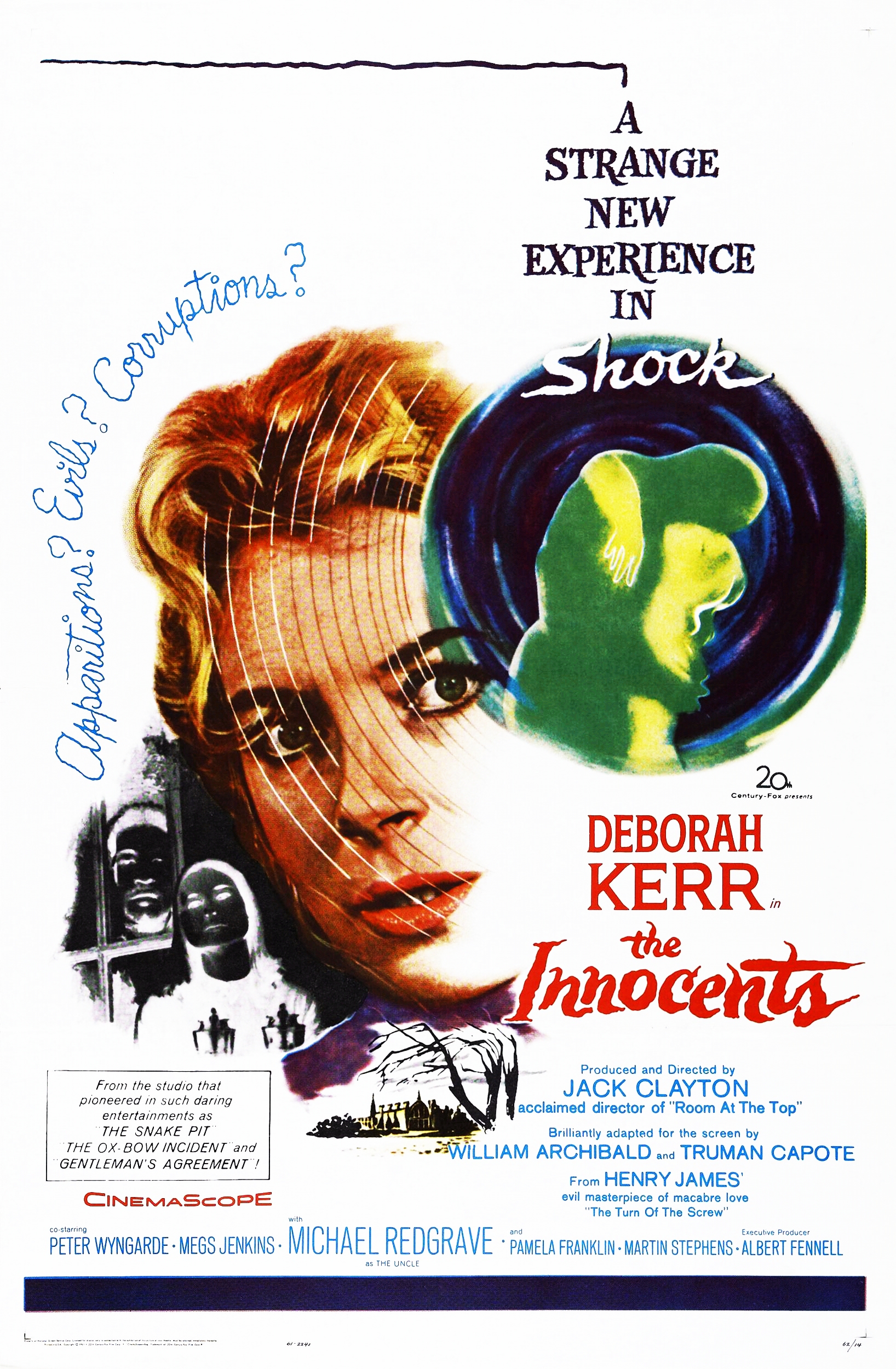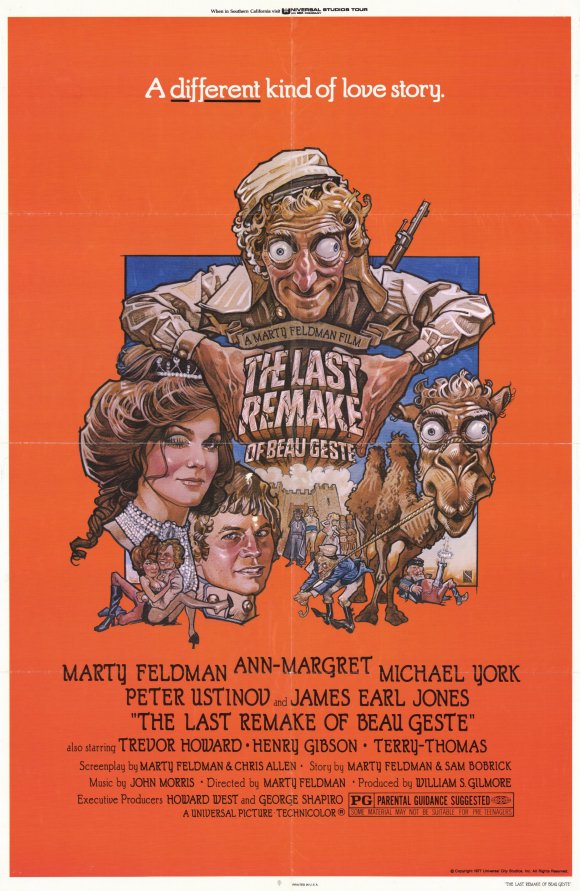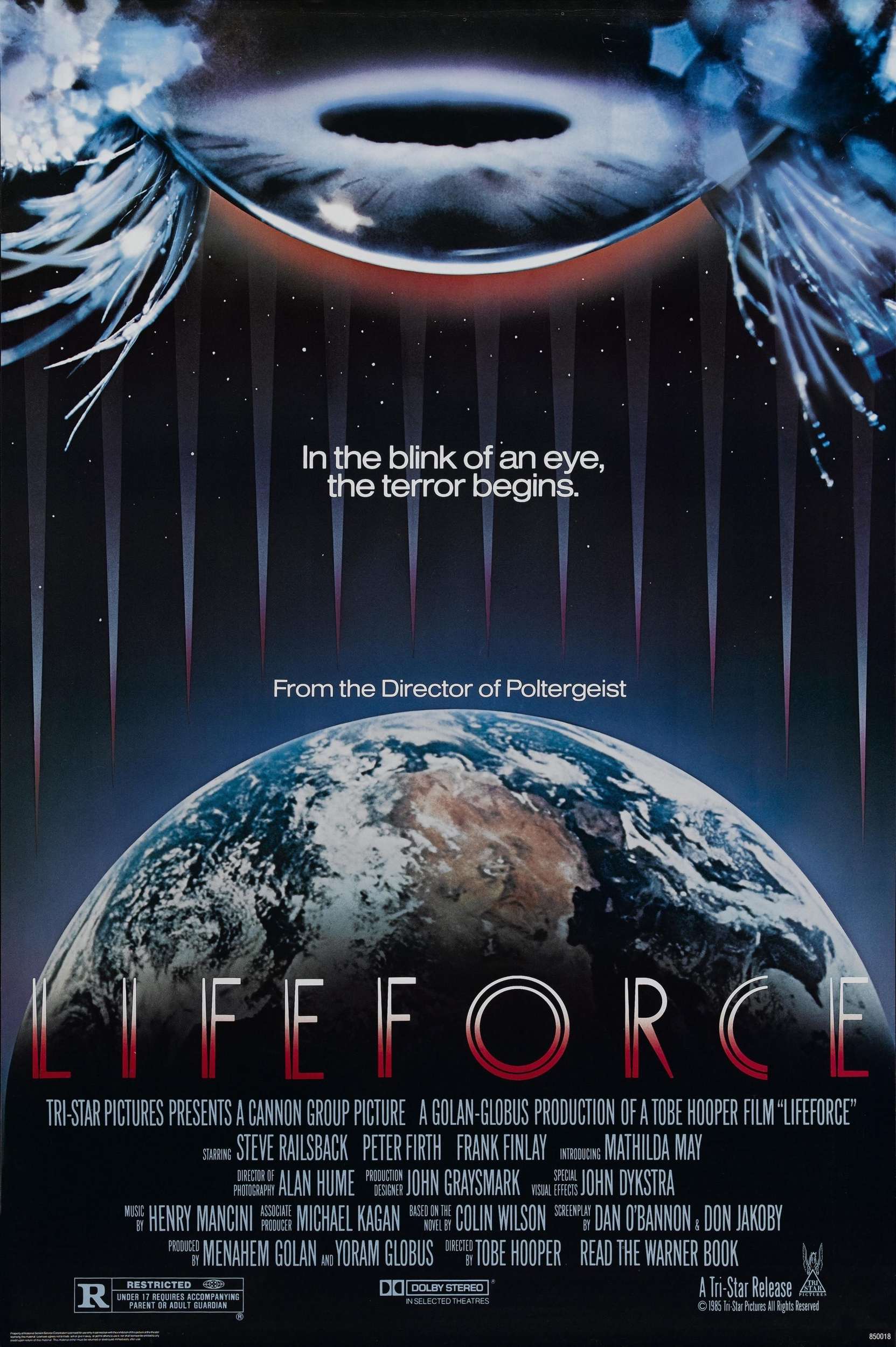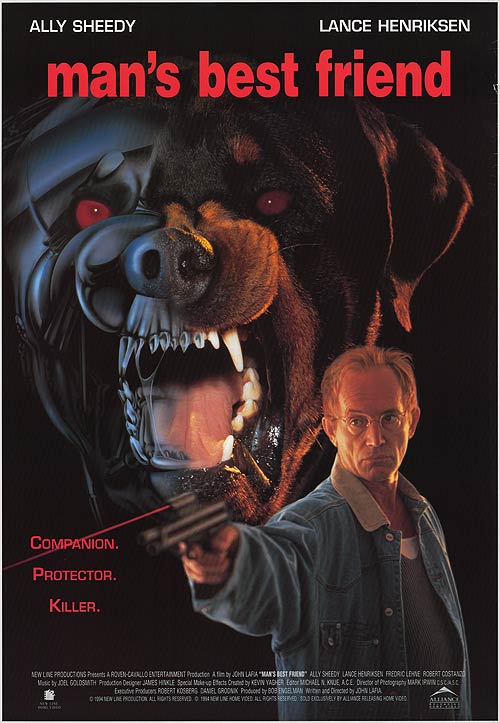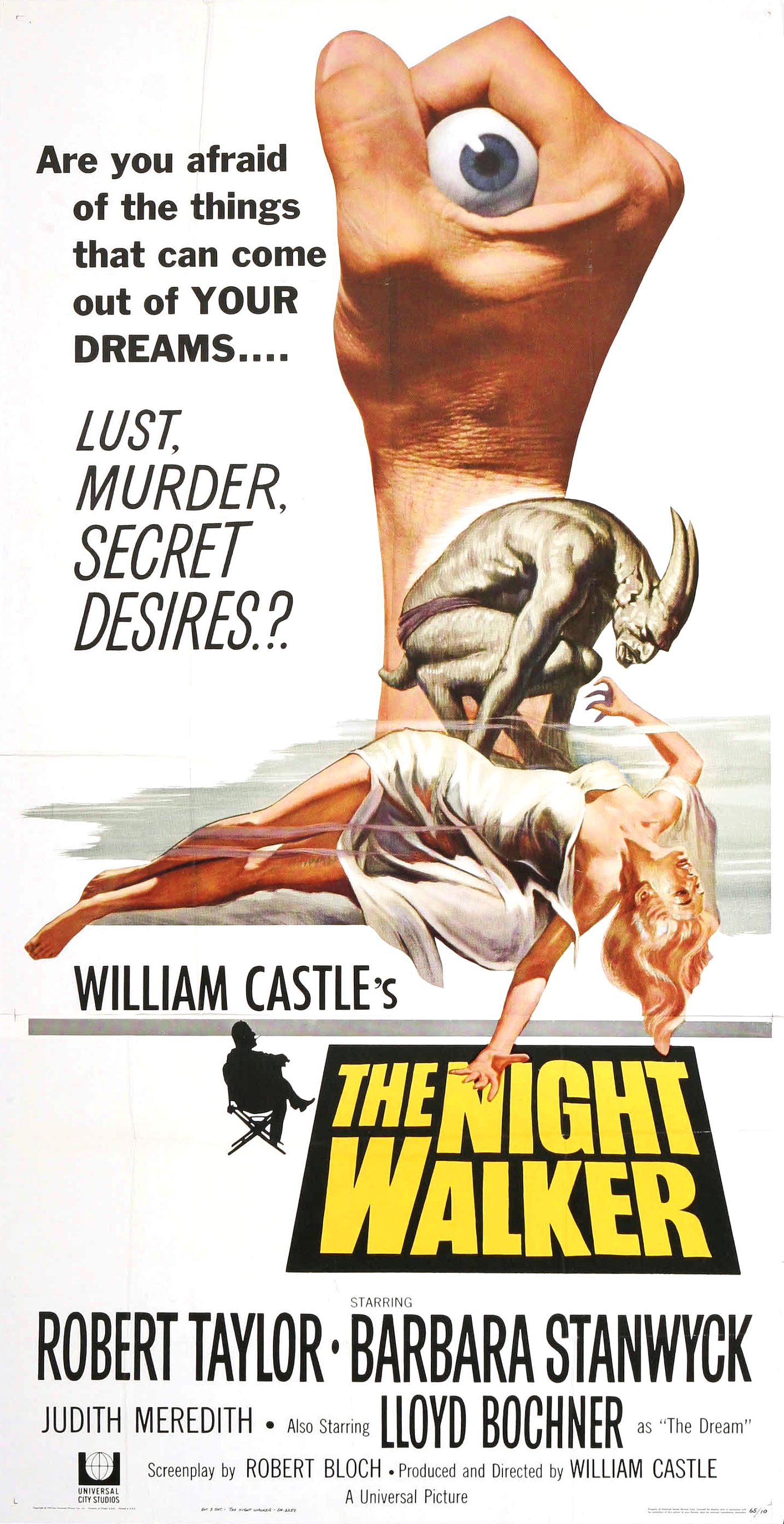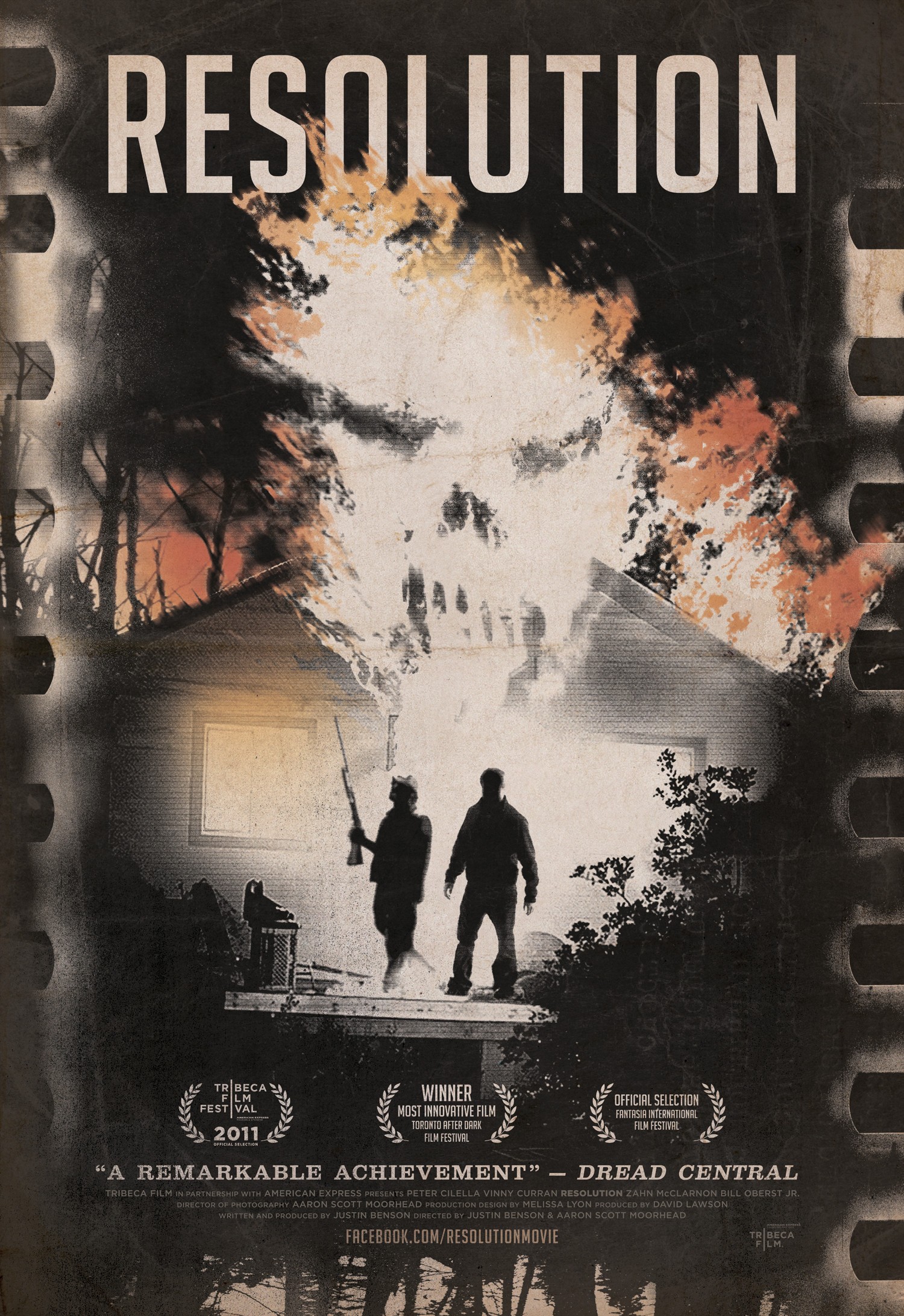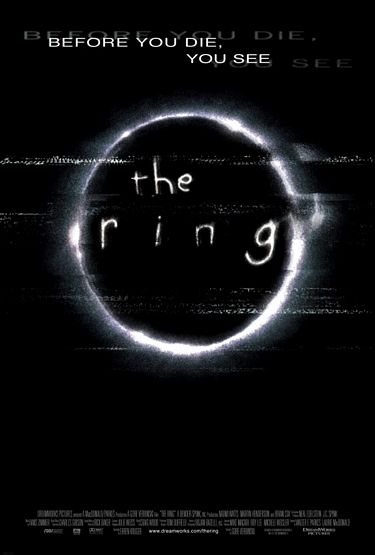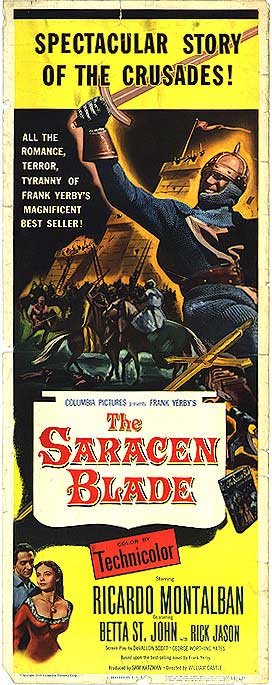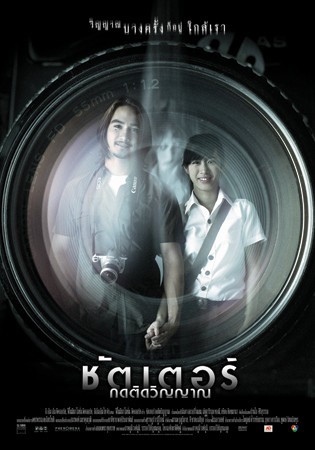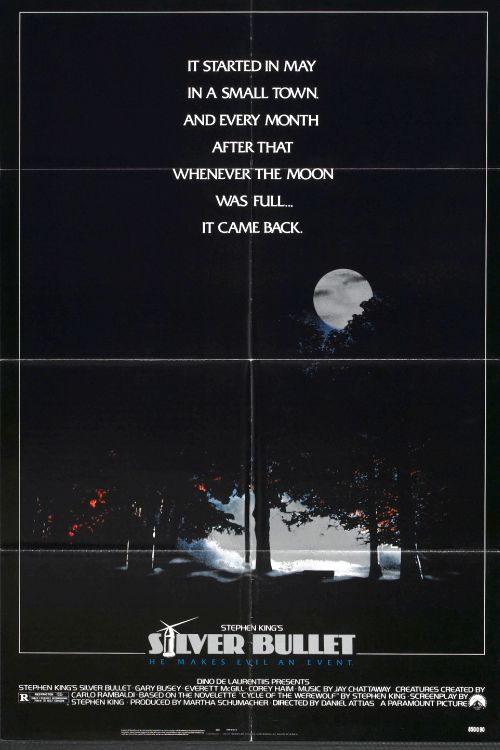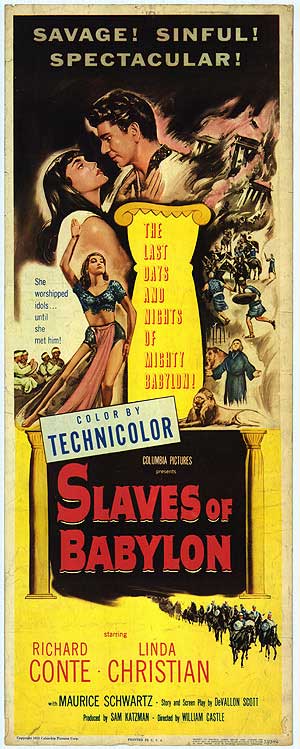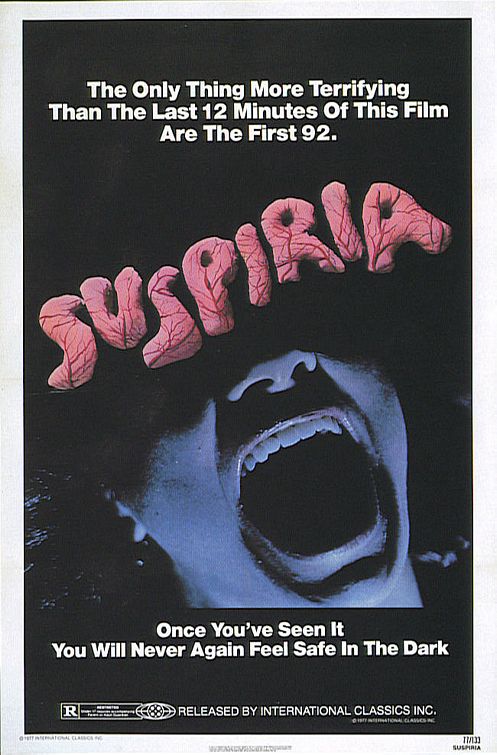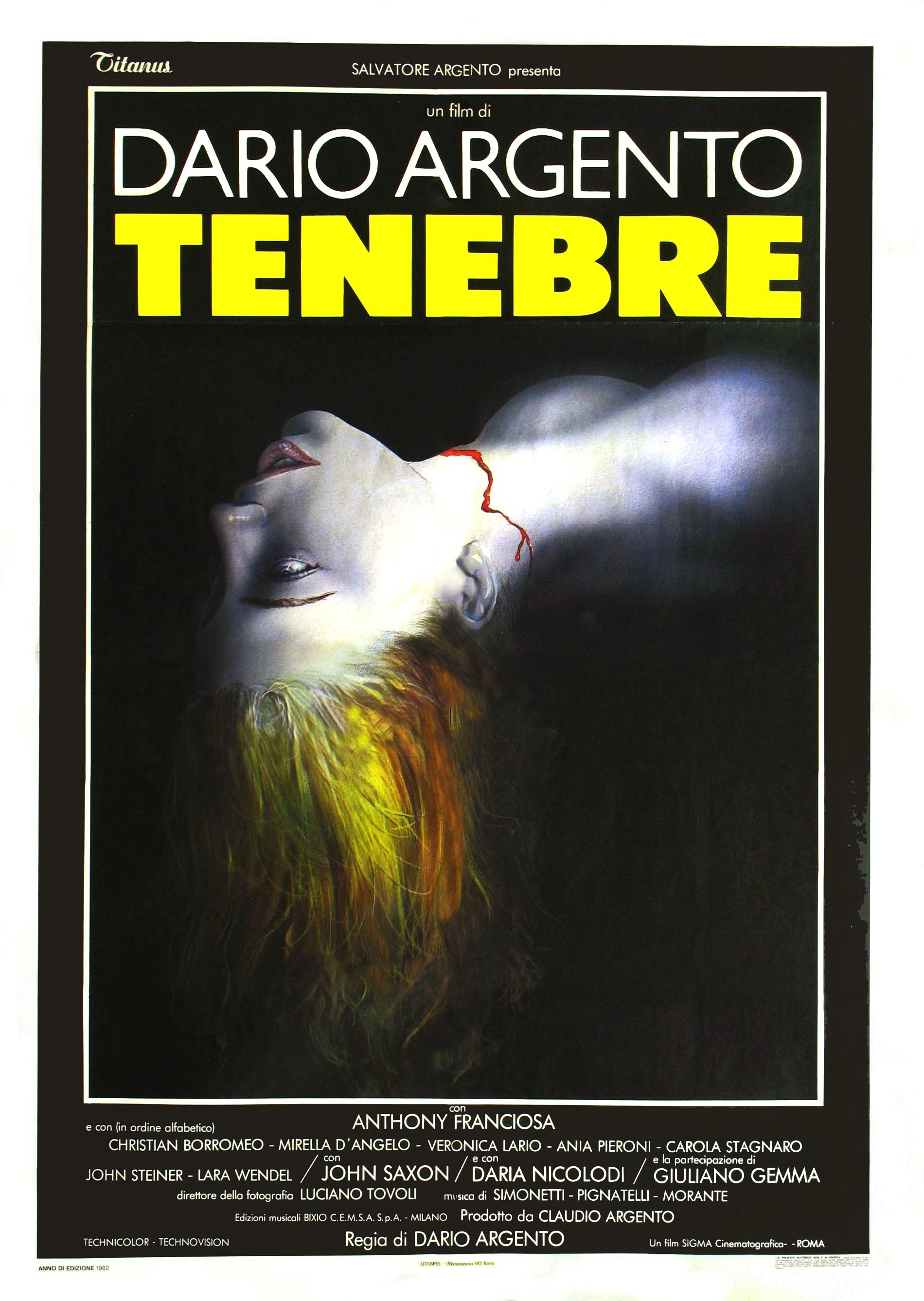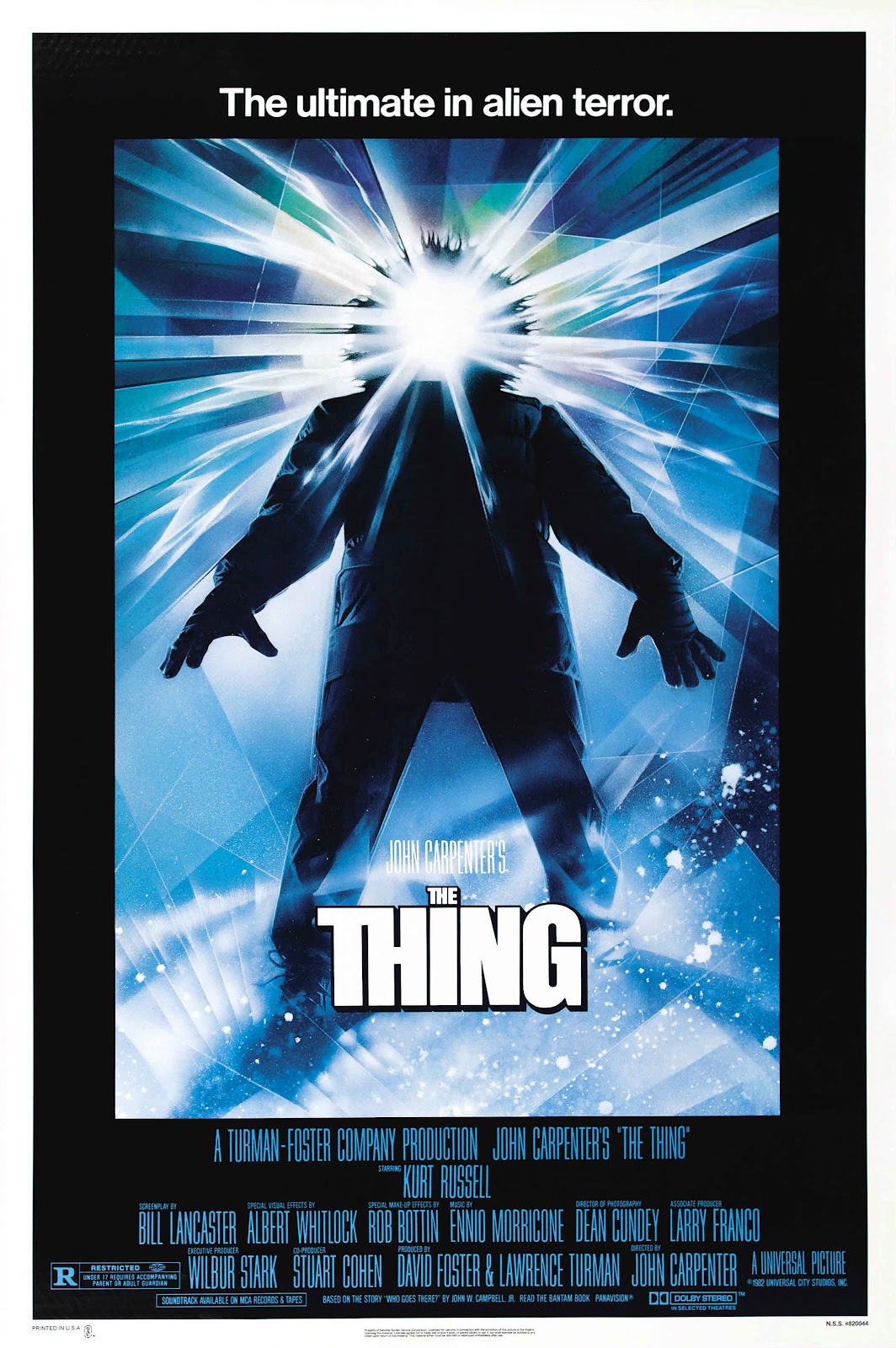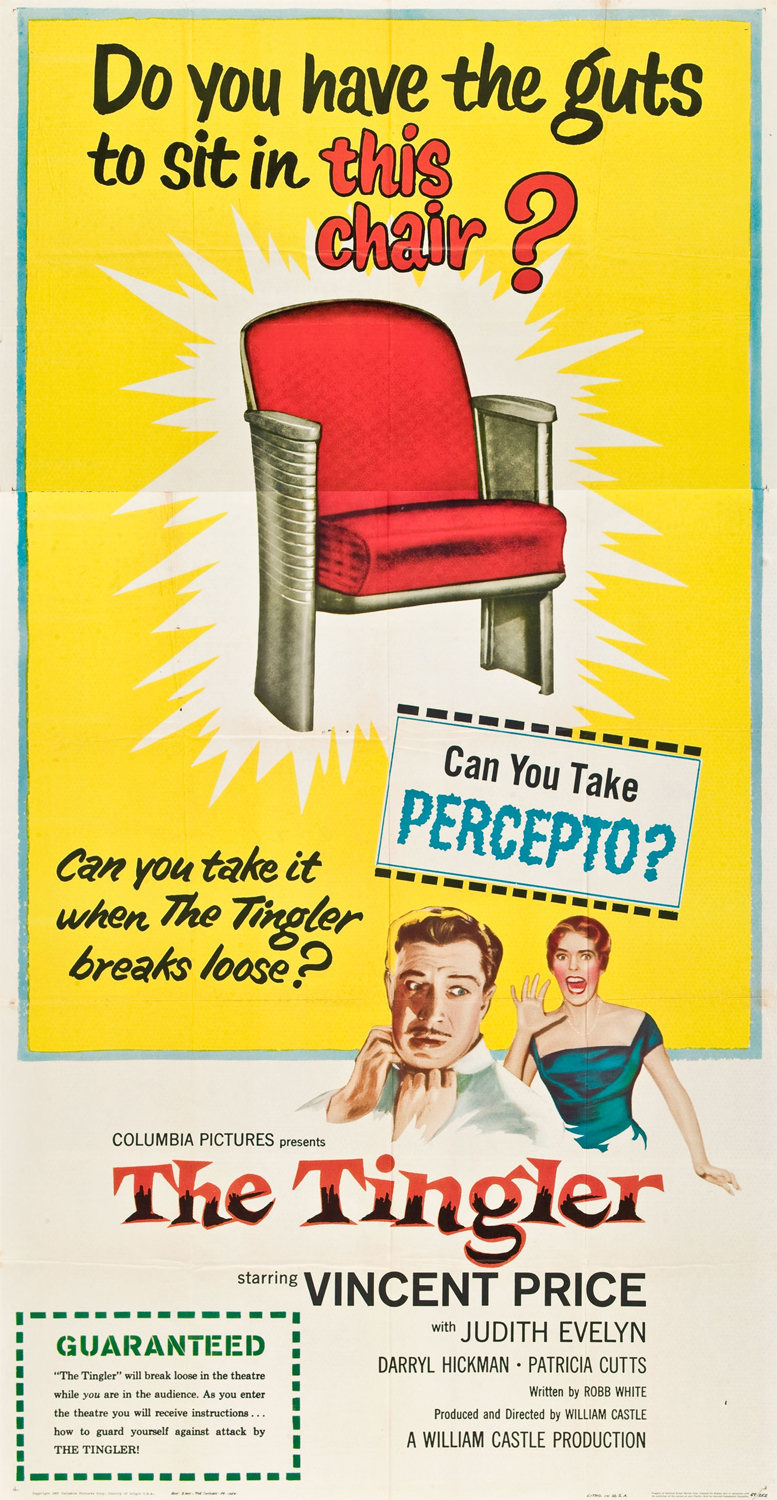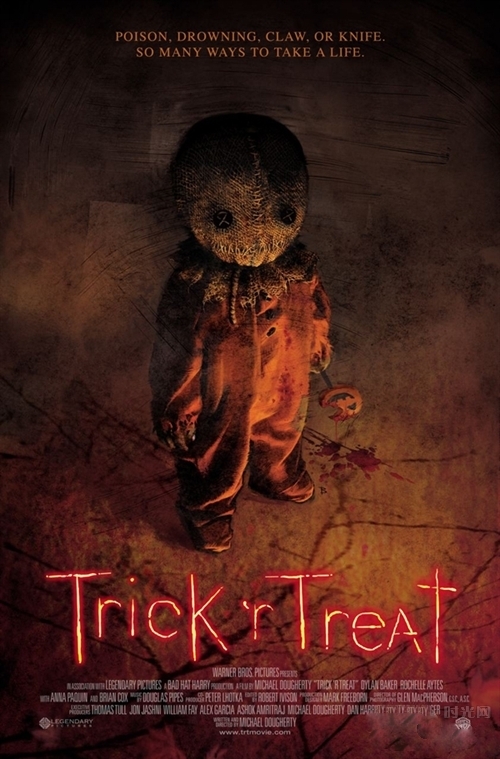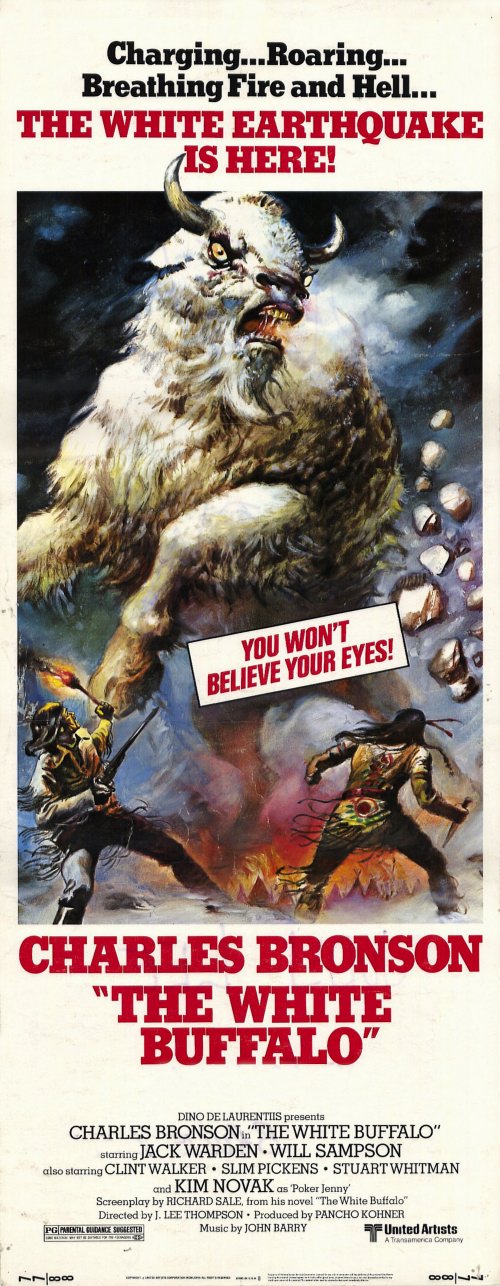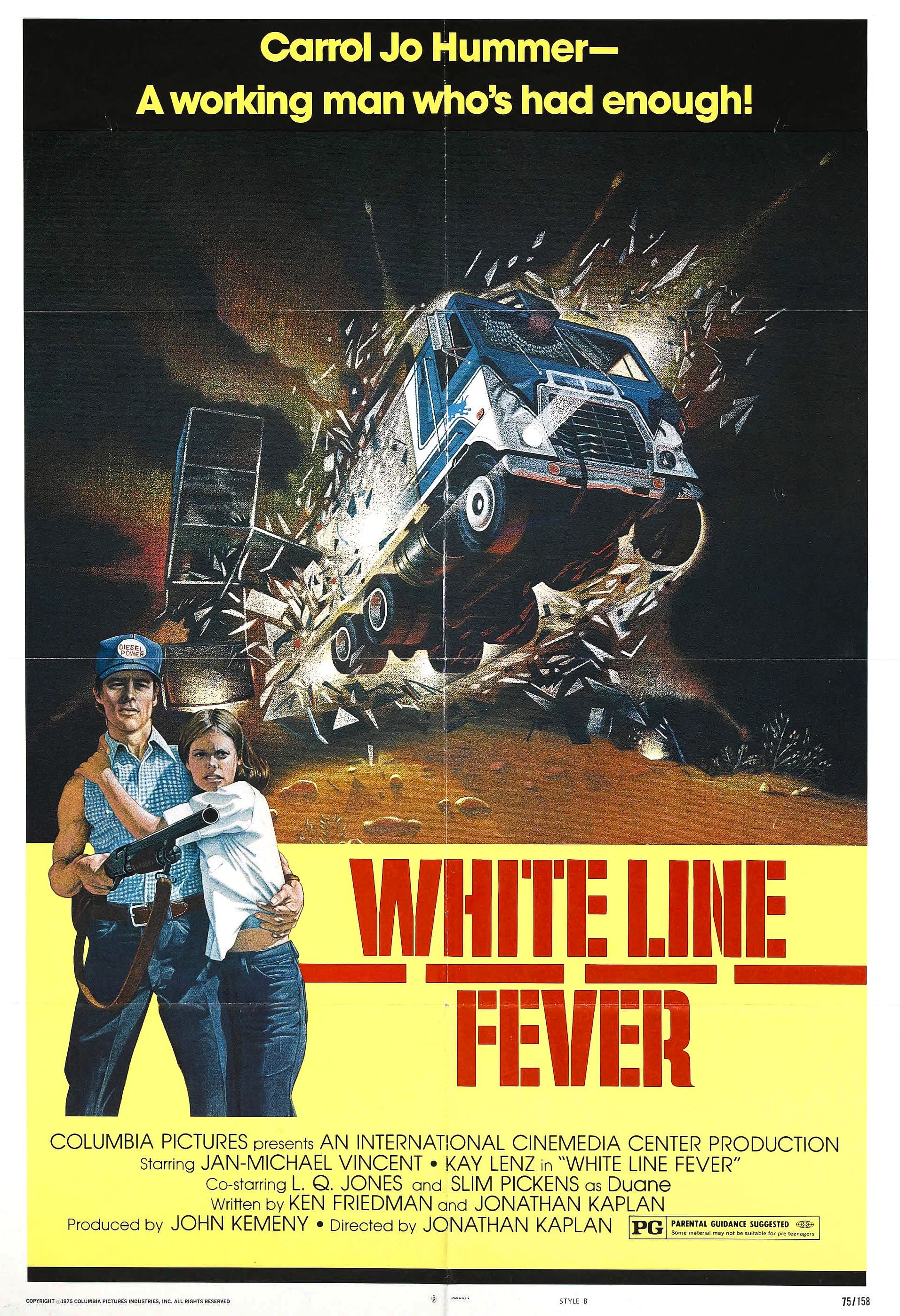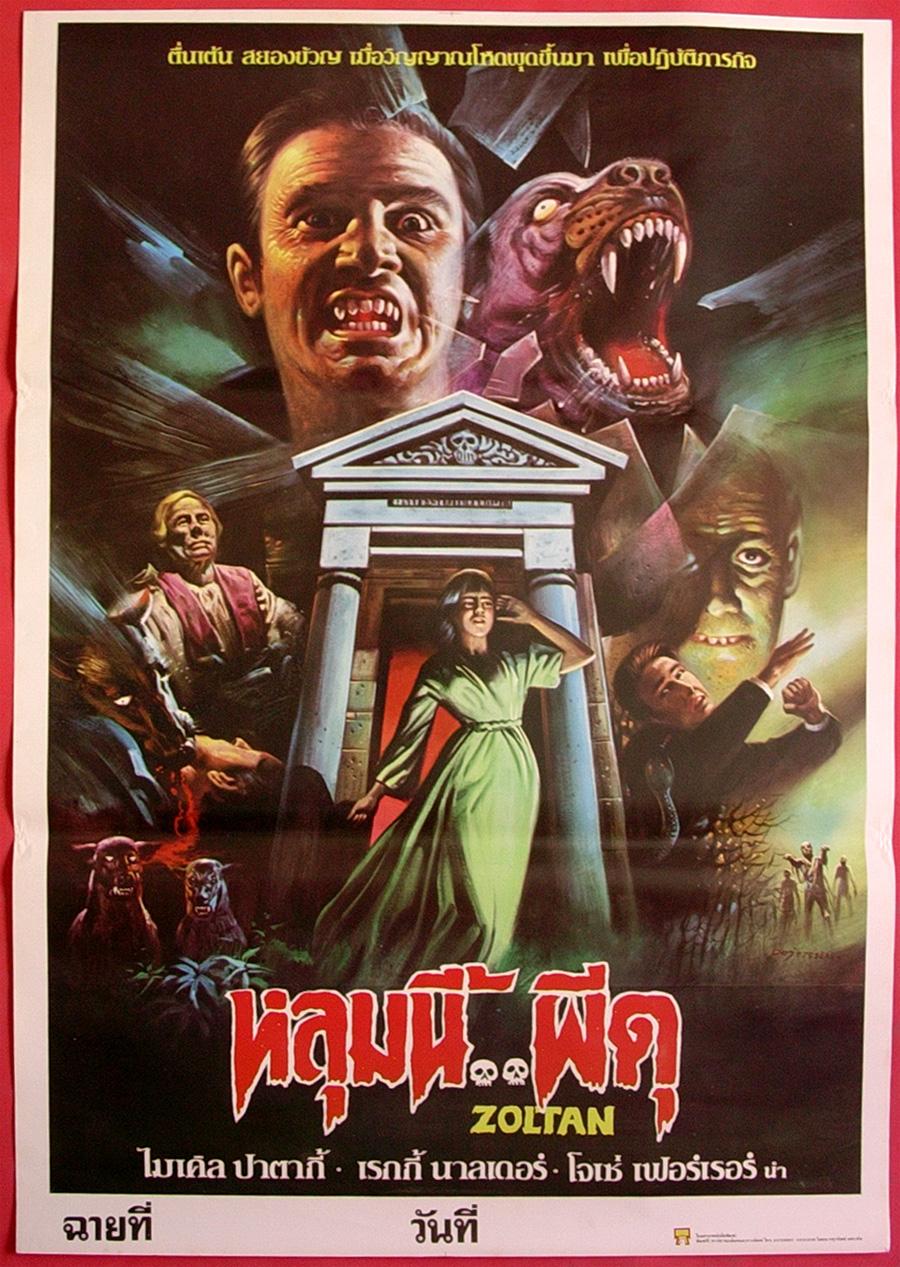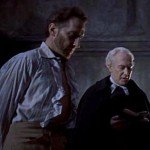
“Revenge is a dish best served cold.” — Klingon proverb, at least according to no less an authority than Khan Noonien Singh
Welcome to Day Four of the
Peter Cushing Centennial Blogathon. We’re going to continue our coverage of Peter Cushing’s six Hammer Films performances as Baron Victor Frankenstein. Given the ending of our previous installment, The Curse of Frankenstein (1957), that might seem unlikely as the good Baron was facing the guillotine for the murder of his maid Justine.
Still, Curse broke British box office records as film-goers eagerly or hypocritically ignored the scathing reviews and moral outrage. Further installments were inevitable. To cut costs, The Revenge of Frankenstein (1958) shared sets and was filmed back-to-back with Horror of Dracula.
Peter Cushing’s Frankenstein might be able to escape his doom, but Christopher Lee’s Monster, dissolved in a vat of acid, did not fare as well. Peter would have to go solo for the rest of the series without his good friend. This struck me as curious, given the heavy make-up Lee wore, and it wouldn’t have been too ridiculous to have him take another, human role later in the series. Alas, such was not to be.
Jimmy Sangster and Terence Fisher returned to write and direct, respectively. This consistency helped to establish the visual style of Hammer Horror, that of garish color and period costume. Sangster had to up his game as well, writing his way out of the corner of the first film and charting new territory away from both Mary Shelley’s novel and Universal’s franchise.
The Revenge of Frankenstein (1958)
Our first image is that of the guillotine, continuing right where we left off, but something must be up because surely we’re not in for 89 minutes of decapitating action. The opening title text indicates Frankenstein has been “condemned to death for the brutal murders committed by the monster he had created,” but the mere existence of the monster is disputed at the end of Curse, and only Justine’s body would be available to blame on Victor. I suppose, given the macabre nature of his laboratory and its contents, that he would be blamed for every unsolved murder in Switzerland.
Alex Gallier returns as the priest from Curse, leading Victor to the headsman with a shuffling trusty in tow. There’s a conspiratorial nod between headsman and henchman, and we follow as the blade is slowly winched upward. We pause as it hangs at the top, hearing a scuffle ensue, and then the blade falls out of frame, quickly seguing to a woman’s shriek and the popping of a wine cork.
Revenge doesn’t take long to establish one of its key conflicts, that of class struggle. Here, we see the underclass at play, getting drunk and plotting avenues for illicit gain. Ten marks for a fresh grave robbing seems a trifle steep, but beggars can’t be choosers, even if the beggar in question is Baron Victor Frankenstein.
Strangely enough, these lowly criminals are exhuming the grave of the recently buried Baron Frankenstein. Inside the coffin is a headless priest, which proves too much for one of the pair. The real Baron Frankenstein introduces himself to the remaining grave robber, who faints dead away. Victor jumps into the grave to check on him and shrugs his shoulders as if to say, “Well, that’s an unexpected bonus.”
A quaintly painted cityscape and title card take us to the fictional city of “Carlsbrück”, where we find the “Medical Council of Carsbruck [sic, umlauts in short supply I guess] in Session”. The Council has a problem with a particularly popular and independent new doctor in the city, Dr. Stein. There is a clear distinction between the men meeting here and in the pub scene earlier. These men are impeccably dressed, the furnishings are posh, their manner cultured and conservative. These are men of means, not action, and their solution to the Stein problem speaks to that. They will send a delegation of three members to seek an appointment and demand Stein joins the Council.
We then see Stein at work, and his office is even more lavish than that of the Council. Nearly a dozen highborn patients crowd his waiting room, sharing it with a colorful parrot and potted plants. As Victor Stein/Frankenstein gets ready to receive the first, he takes a boutonnière from a vase, preserved with a small bit of water, and tucks it into the buttonhole of his lapel. He sniffs it to test its freshness.
This little prop manipulation is pure Cushing and a testament to his stagecraft. The seemingly innocent gesture will be revisited later, where its importance will become more clear. Suffice to say, Victor Frankenstein appreciating the properties of a preserved dead thing shouldn’t be all that surprising.
The remainder of the scene is some lightly sexual tomfoolery with a local Countess, obviously seeking to match her daughter up with the successful doctor through Münchausen by proxy. We do have our first mention of Victor’s work with the poor, however, and it becomes clear that Victor and his work will become a point of intersection and, most likely, contention between the upper and lower classes. It is also clear that Victor may be one of the most eligible bachelors in Carlsbrück.
When we next catch up to Victor, he’s hard at work in his “chirurgie” ward, administering to the poor. It is here that the Medical Council delegates catch up to him. They are disgusted to be so close to the unwashed masses. Victor examines one patient, a pickpocket, and admires the “picturesque” tattoo that adorns his forearm before immediately scheduling amputation. He then explains to the delegates that they spurned him when he first arrived in the city, and now that he is successful, he doesn’t need nor want their assistance.
That is enough for only two of three delegates. Dr. Hans Kleve (Francis Matthews) believes he recognizes Dr. Stein from the funeral of Professor Bernstein. Matthews didn’t appear in Curse, so Kleve’s attendance at that funeral must’ve been off-screen. Once pressed, Victor finally confesses to his true identity. Kleve wants in on the Baron’s groundbreaking work, and he’s willing to use blackmail to get the post, a very different arrangement than the one between Victor and his former mentor Paul.
During the early stages of their negotiations, Victor dissects a chicken dinner with surgical precision. When it comes time to weigh the risk of trusting Kleve, Victor suggests the price of betrayal by wiping down his carving knife less than a foot from Kleve’s face. Their arrangement sorted out, Victor brings his new pupil to their back-alley laboratory. Here, we get our formal introduction to Karl (Oscar Quitak), the paralyzed trusty who enabled the Baron’s escape from the guillotine.
The laboratory is also our first glimpses of Otto the Chimpanzee, the patchwork man, and the artificial brain. The last is particularly goofy, a pair of tanks with a preserved arm and eyes attached to a generator. The eyes tracking a Bunsen burner without muscle, tendon, or ligament is probably meant to be disturbing, but it just comes across as comical to me. I find it to be the only weak point in the film, but it’s easily (pardon the pun) overlooked.
Victor’s creation is not the hideous monster of Curse. Aside from a few scars, the creation (Michael Gwynn) is a perfectly normal man, albeit a rather large specimen. All he needs is a brain.
Kleve initially recoils in horror, believing he is going to be asked to donate his brain, but Victor laughs this off. “No, your brain is too valuable where it is,” he says. No, it is Karl who is going to put his fine brain into the newly crafted body, a body free of pitiable paralysis. And so, the Baron’s latest monster is created to help someone other than himself. Perhaps our little Victor is growing up.
Sure, he’s exploiting the poor in his ward, but I propose you take a second look. Following the continuity from the first film, this is the first time Victor is putting all that medical knowledge and experimentation into professional practice. He may be poaching around for parts, but he also seems genuinely engaged in the challenge of patient care. Given his noble origins, it’s likely the first job he’s ever had, and he’s wildly successful. I’m sure someone could chart a course through Peter Cushing’s Baron Frankenstein, through Cushing’s Sherlock Holmes, and emerge at Hugh Laurie’s Gregory House, but such conjecture is a bit beyond the scope of this post.
I confess The Revenge of Frankenstein does sound a bit more marketable than The Redemption of Frankenstein.
Kleve is quickly put to work in the ward, attending to the poor. He also interviews Margaret Conrad (Eunice Gayson), daughter of the minister, who is eager to assist in their charitable endeavors. When Karl accidentally interrupts, his tongue proves just as paralyzed as his right side, clearly smitten with the young lady. Though a bit conservative and buttoned up here, Eunice Gayson would later become the very first Bond girl and the only one to appear as the same character in multiple films, as Bond’s first true girlfriend, Sylvia Trench, in Dr. No (1962) and From Russia with Love (1963).
After placing his boutonnière in a vase (that again), Victor explains the need to placate Margaret to keep up appearances and avoid interference in his work. He suggests Hans have her wash a patient to prompt her resignation. That sorted out, it’s time to get Karl’s brain into his new body.
Despite the suspenseful music, everything goes smashingly, at least at first. Frankenstein prescribes bed rest until his brain adjusts to his new body, enforced with restraints in a private attic room above the hospital. Karl’s relocation is witnessed by a nosy orderly (Richard Wordsworth at his Dickensian best), who hears Karl’s incoherent screams before the sedatives take hold.
Karl (now played by Michael Gwynn) does make rapid progress, and the moment when Victor encourages him to move his right arm for the first time is genuinely touching, mostly due to Cushing’s gentle manner. Victor apologizes that he can’t stay as he is due down in the ward. Do I detect a sense of responsibility?
Kleve fumbles the ball during his monster-sitting responsibilities. He tells Karl all about the lecture tour, where Karl’s old body and new body will be side-by-side to demonstrate their great achievement. Kleve is too absorbed in his own impending fame to detect Karl’s sadness at being treated like a freak even in his new life.
On the ward, both the snooping orderly and Margaret are summarily dismissed by Victor. The dirty indigent tries to commiserate with the highborn girl by telling tales of Dr. Stein’s dark doings, but she’s skeptical. She calls his bluff, so he breaks out his trump card, the poor wretch hidden in the attic.
Margaret tries to puzzle out how the mystery patient knows her name, but Karl, clearly more confident, glosses over their prior encounter. She is so taken with him that she gives him her address and is talked into loosening his restraints.
Meanwhile, the orderly grills Kleve for information. He triumphs the dirty habits of wild animals, and this gives Kleve a sudden insight into the behavior of Otto the chimpanzee with an orangutan’s brain. A now carnivorous orangutan.
Kleve questions Victor about this turn of events. While chimps will eat meat, orangutan’s are almost exclusively herbivorous. “I discovered it soon after the operation,” Victor explains. “He ate his wife.” Hans is aghast. “That’s another monkey?” “What else would he be married to?” Victor finds Otto’s cannibalistic tendencies a small price to pay for a happy, healthy life. Surely, it couldn’t happen to Karl. Karl’s brain is fine, unlike Otto’s, which was damaged during his recuperation (calling back to the first film and the pre-op damaged brain, we’re making progress but we’ve still got a few kinks to work out). Besides, Karl knows about Otto’s fate and will be sure to obey doctor’s orders to mitigate the risk.
Before Hans can come truly unglued about the potential of cannibal Karl, Victor is excited to show him yet another secret project. It’s another patchwork man, but this one bears a striking resemblance to the Baron himself. As they transport Frankenstein 2.0 to the preservation tank, we see the tattooed arm Victor was so fond of adorning his latest creation.
In the attic, Karl is busy disobeying orders and dressing himself, perhaps for the first time. As he flexes his right arm and buttons his pants, it’s hard to blame him even though he knows the risk better than we do. Karl blithely ignores the new right leg that doesn’t seem as sturdy as it should, taking a moment to admire himself in the mirror. He can’t waste another minute before embarking on his new life, and out the window he goes.
Before hitting the highway, Karl has some unfinished business, and sneaks back into the lab to incinerate his old body. He runs afoul of the drunken janitor who doesn’t recognize him and gives him a sound thrashing that manages to wreck much of the equipment. Karl eventually hulks out and throttles the sadistic scum to death. When he sees Otto enjoying a fleshy snack, Karl commences to drooling and is terrified at the implication.
Margaret finds Karl hiding in her stables. He begs her not to tell Dr. Stein, and she agrees, but rushes to tell Hans instead, swearing him to secrecy. It doesn’t last long, however, before Victor gets in on the pursuit.
The stress begins taking its toll, and Karl’s new body starts to fail him, reducing him to a shambling, cannibalistic monster prowling the streets. The green tint for Karl used in promotional materials was clearly inspired by the make-up used for the 1931 black-and-white Universal film and not anything in this one, but Gwynn’s gradual transformation is effective just the same.
Before Hans and Victor can catch up with Karl, he literally crashes a posh dinner party attended by Margaret. As the wealthy revelers gasp in fear, Karl stumbles over and begs Victor for help. By name. “Frankenstein help me” are his last words.
In the wake of this scandal, the Medical Council calls an emergency meeting. Hans wants to flee, but Victor is preoccupied. He has prepared for this eventuality.
The waiting room is deserted, and Hans has been summoned before the Council. Victor insists upon accompanying him to face their accusations, but not before discarding his boutonnière (a-ha!).
At the Council, Victor admits to being a Frankenstein, but denies being Baron Frankenstein and claims he changed his name to avoid the stigma the name carries. An exhumation of the baron’s grave ends the charade as the priest’s trappings are found in the coffin.
The rumors have spread from rich to poor, and Frankenstein finds his patients have no more love for him than the Council. Here, the reception is far less formal, and he is beaten nearly to death by those he tried to help.
Kleve arrives in time to save his life, but Victor fears it is too late. Hans knows what to do. The authorities arrive at the back-alley laboratory only to find Victor Stein’s lifeless corpse.
Later, on London’s fog-shrouded Harley Street West, a Dr. Franck washes up for surgery, and we see a certain oft-admired tattoo. Hans Kleve tells Dr. Franck that his next patient is waiting, but before he steps out into the waiting room, Dr. Franck plucks a new boutonnière from its vase. A fresh flower for a fresh start.
In the end, it seemed Victor Frankenstein was denied both his revenge and his redemption, but he cheated death once more, so join us tomorrow for The Evil of Frankenstein (1964). You’re a bad person if you don’t.


